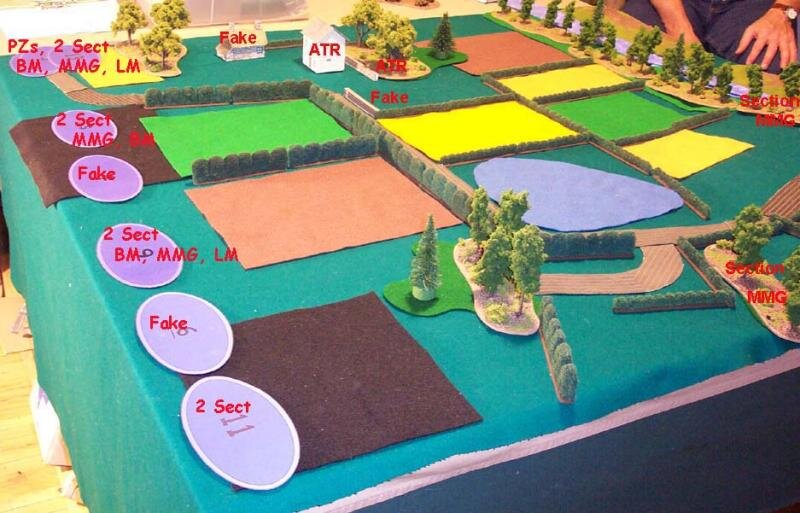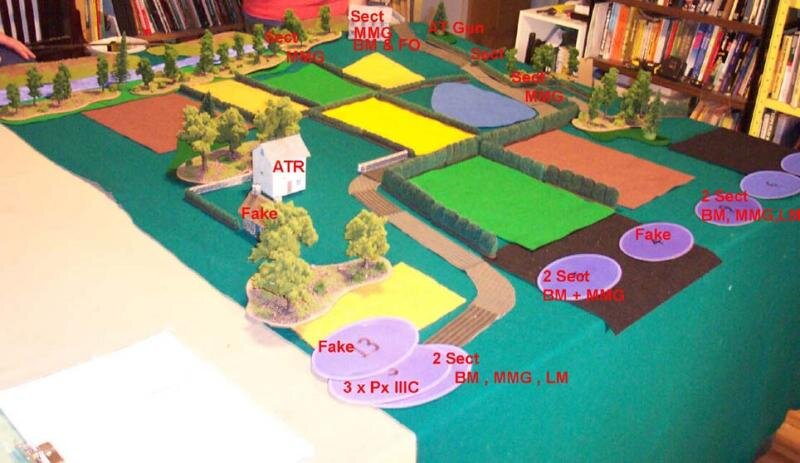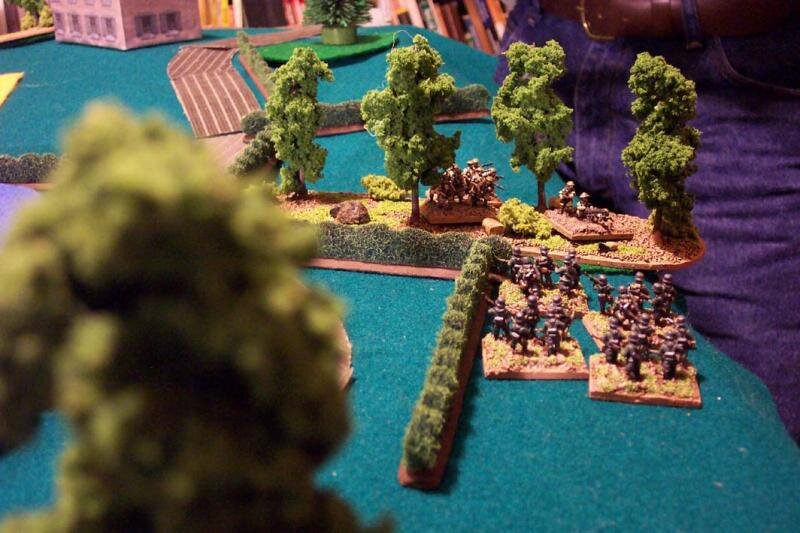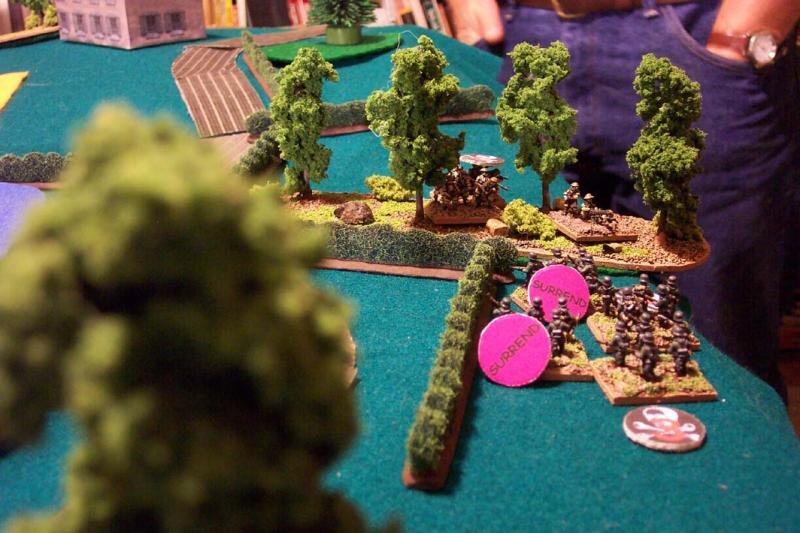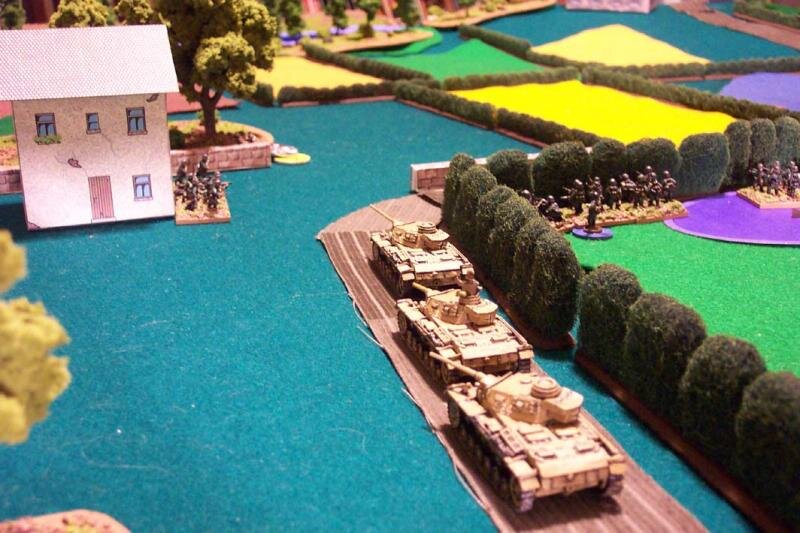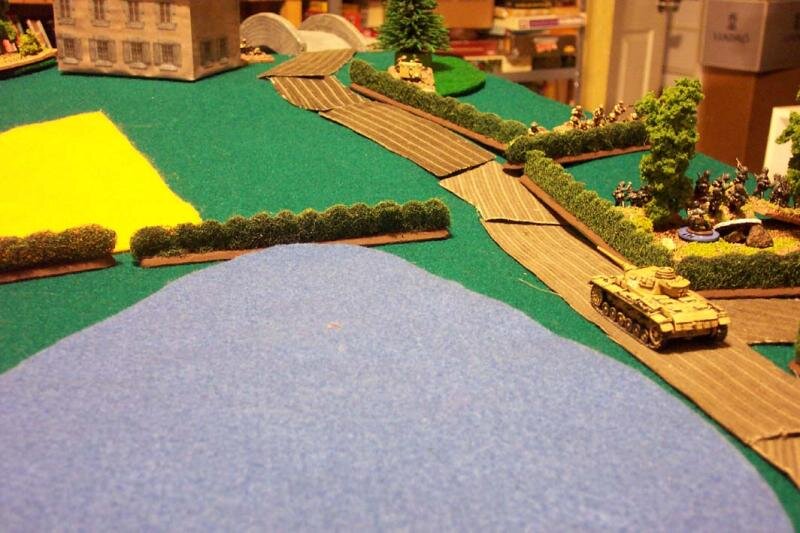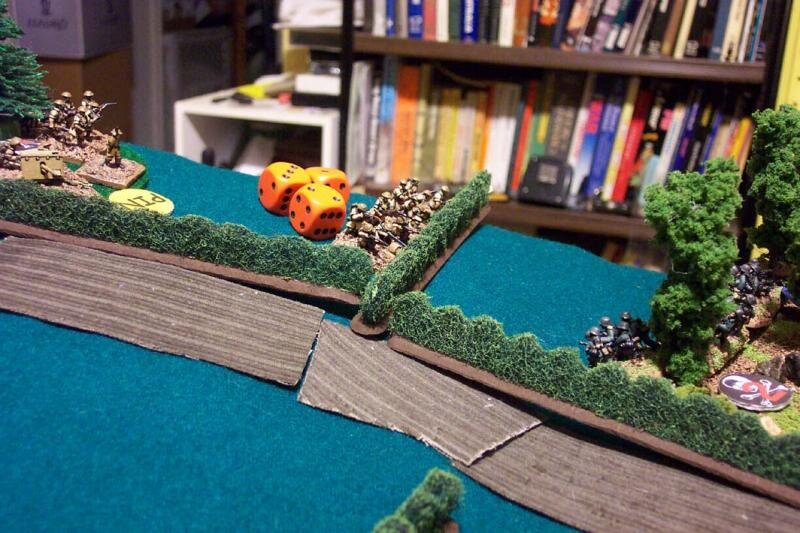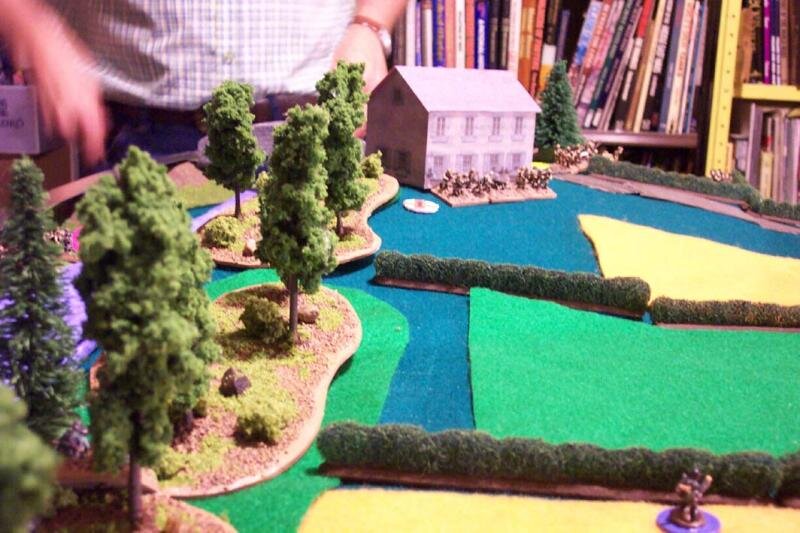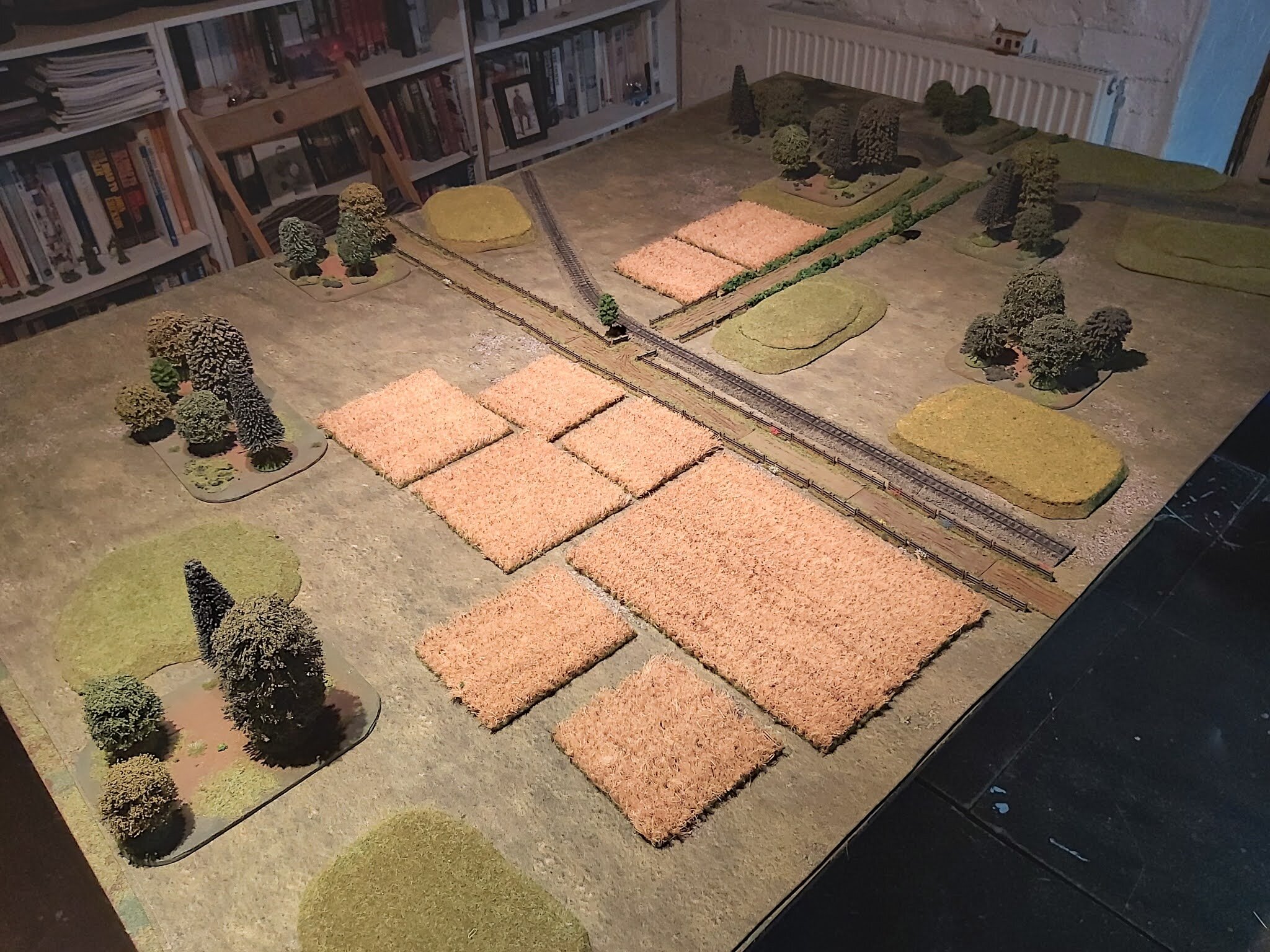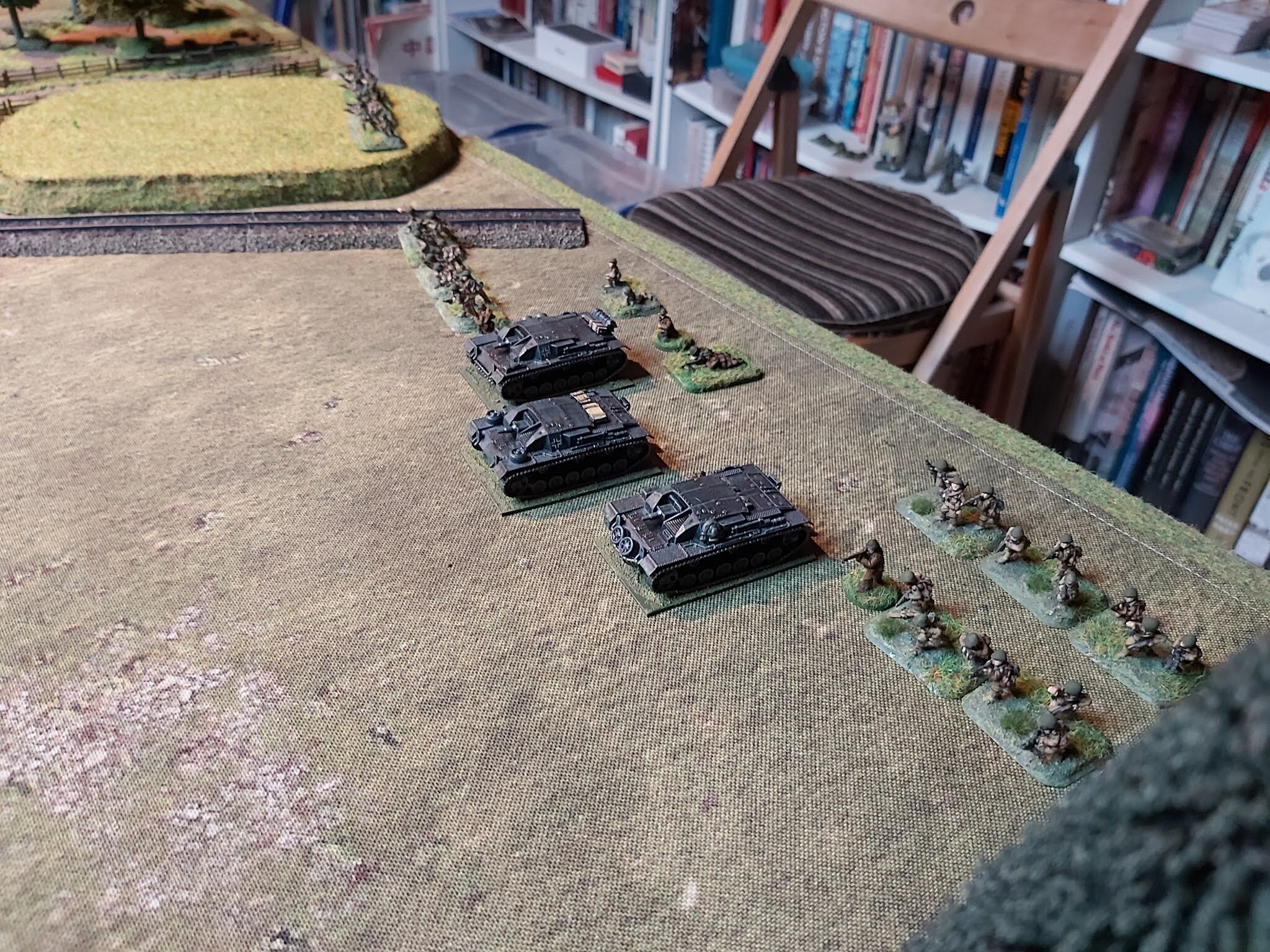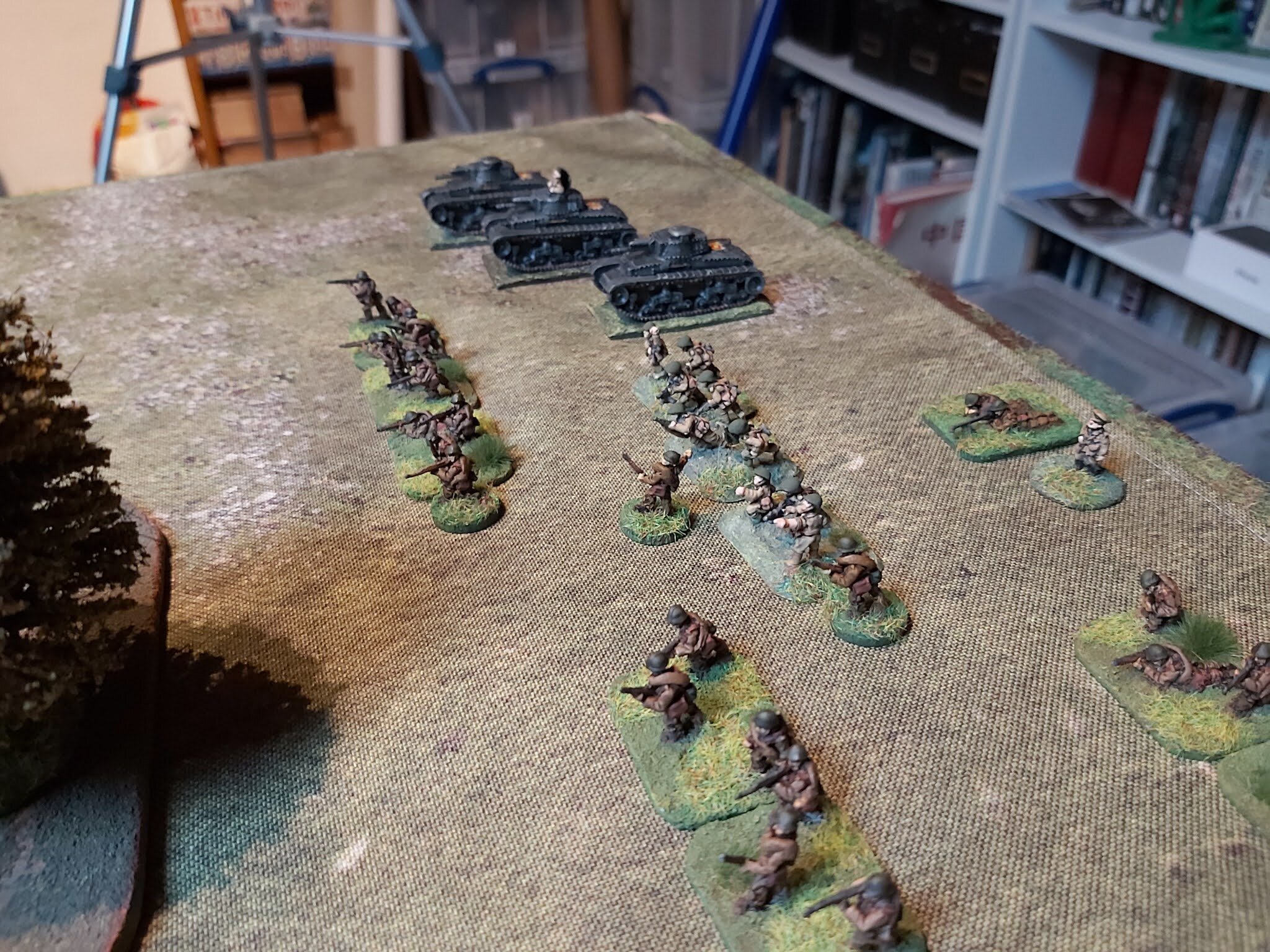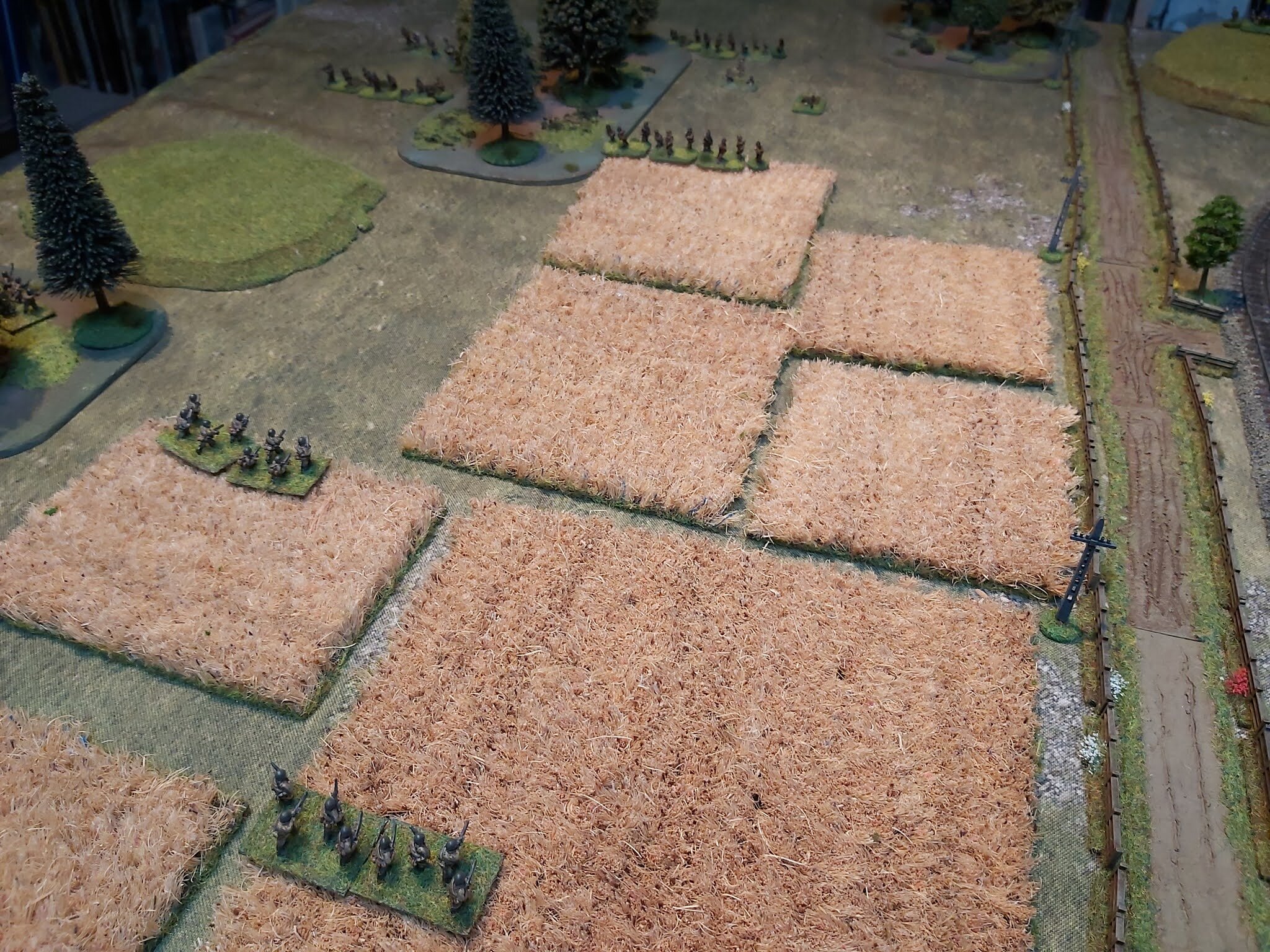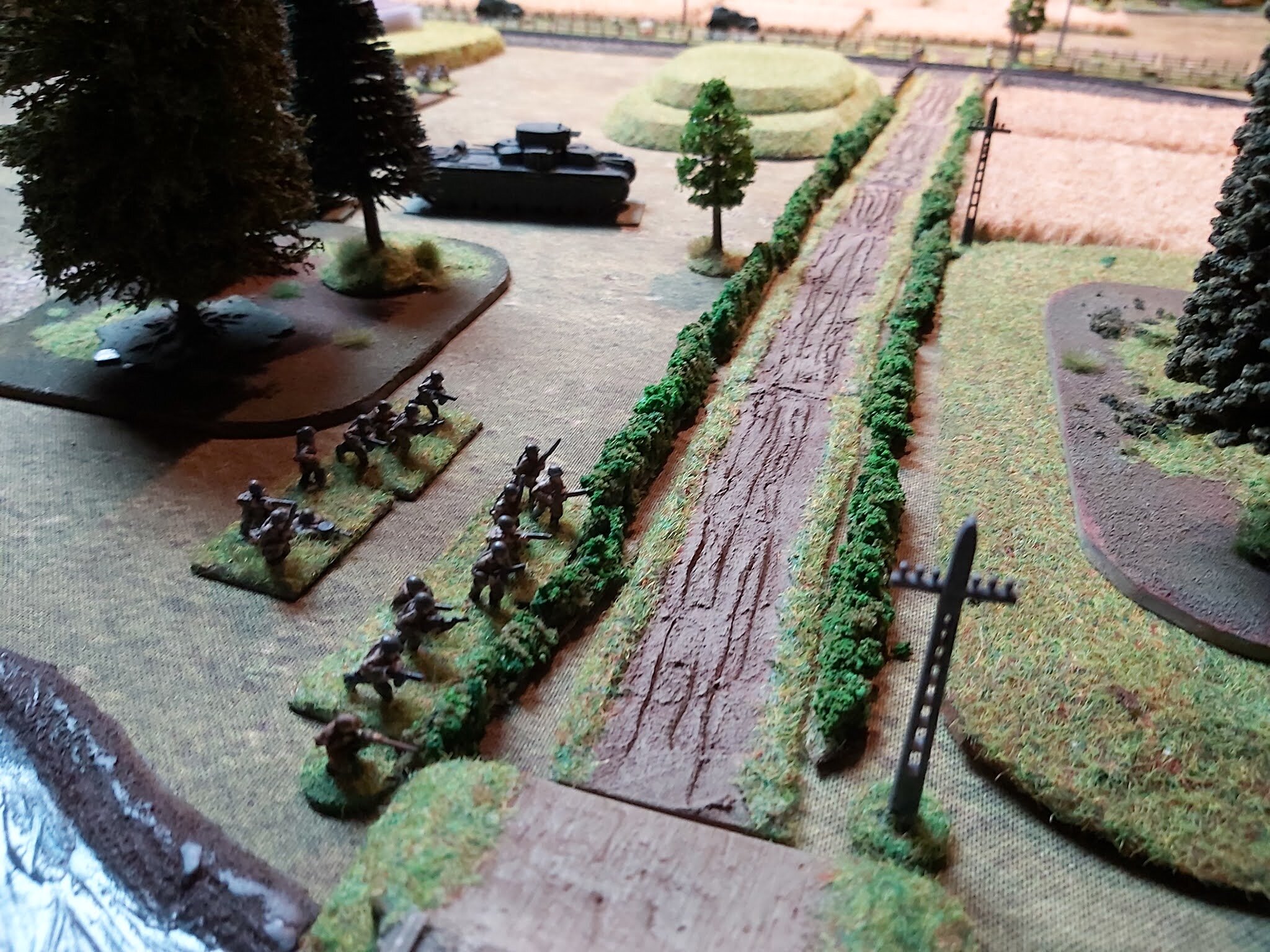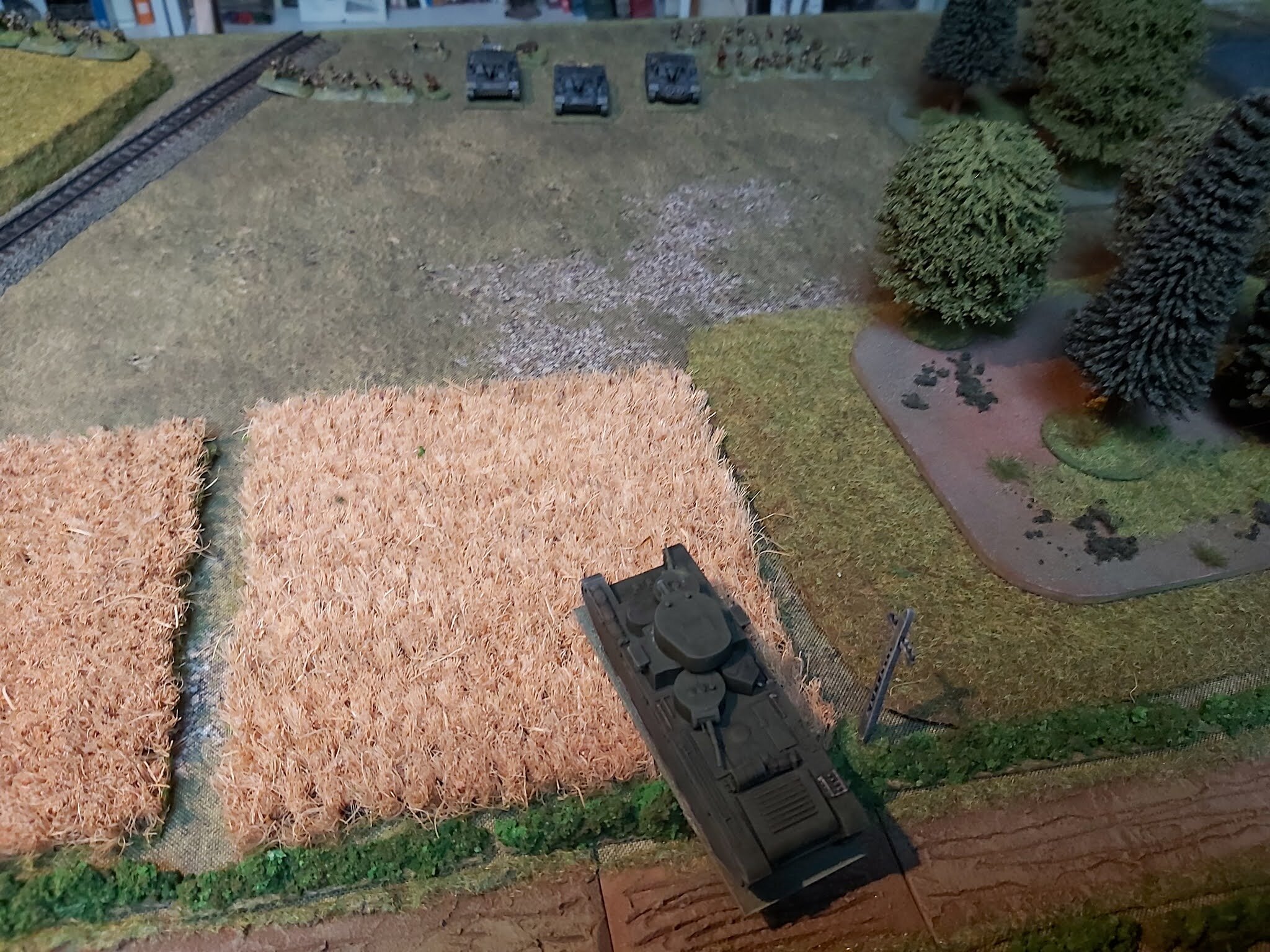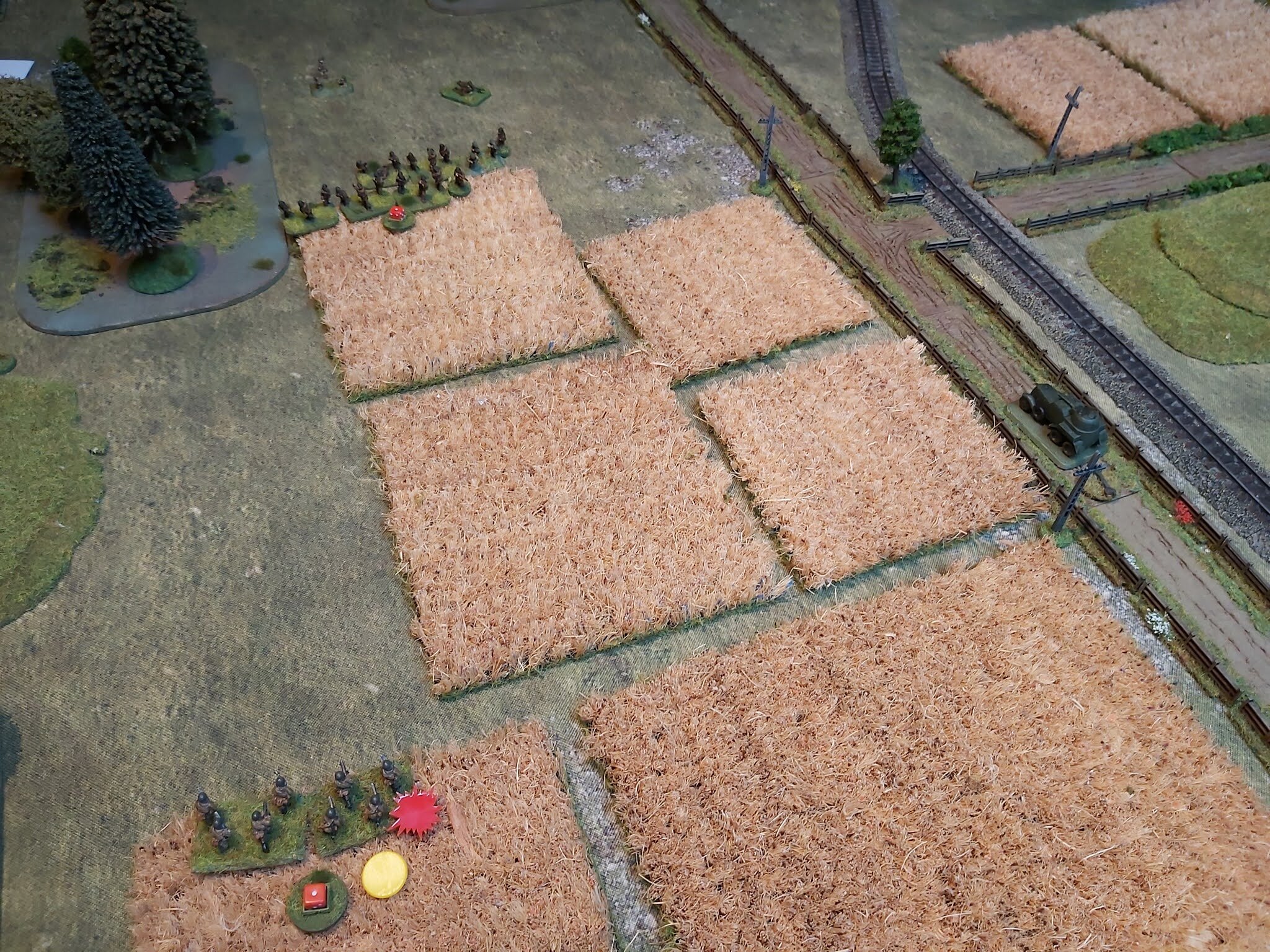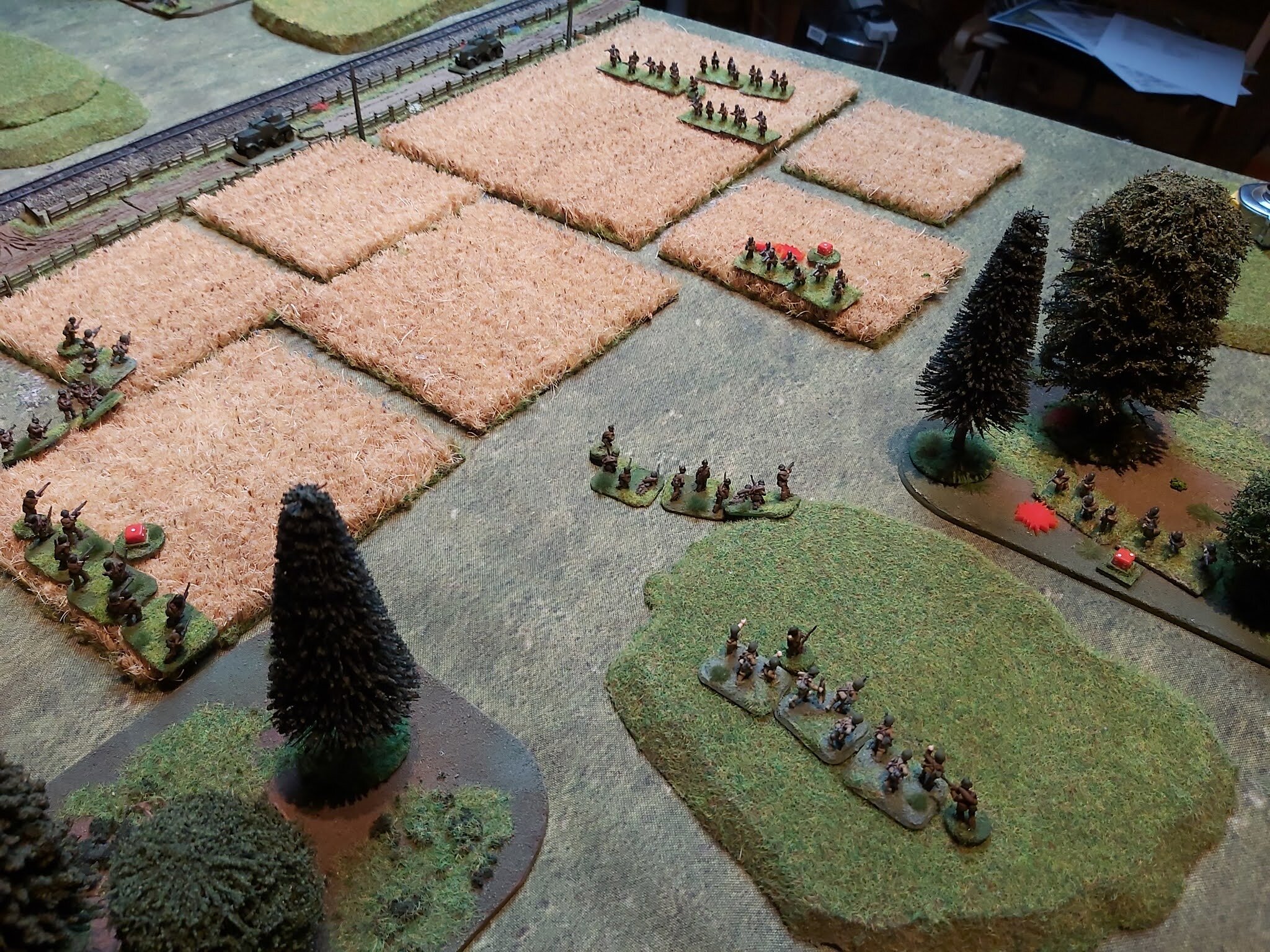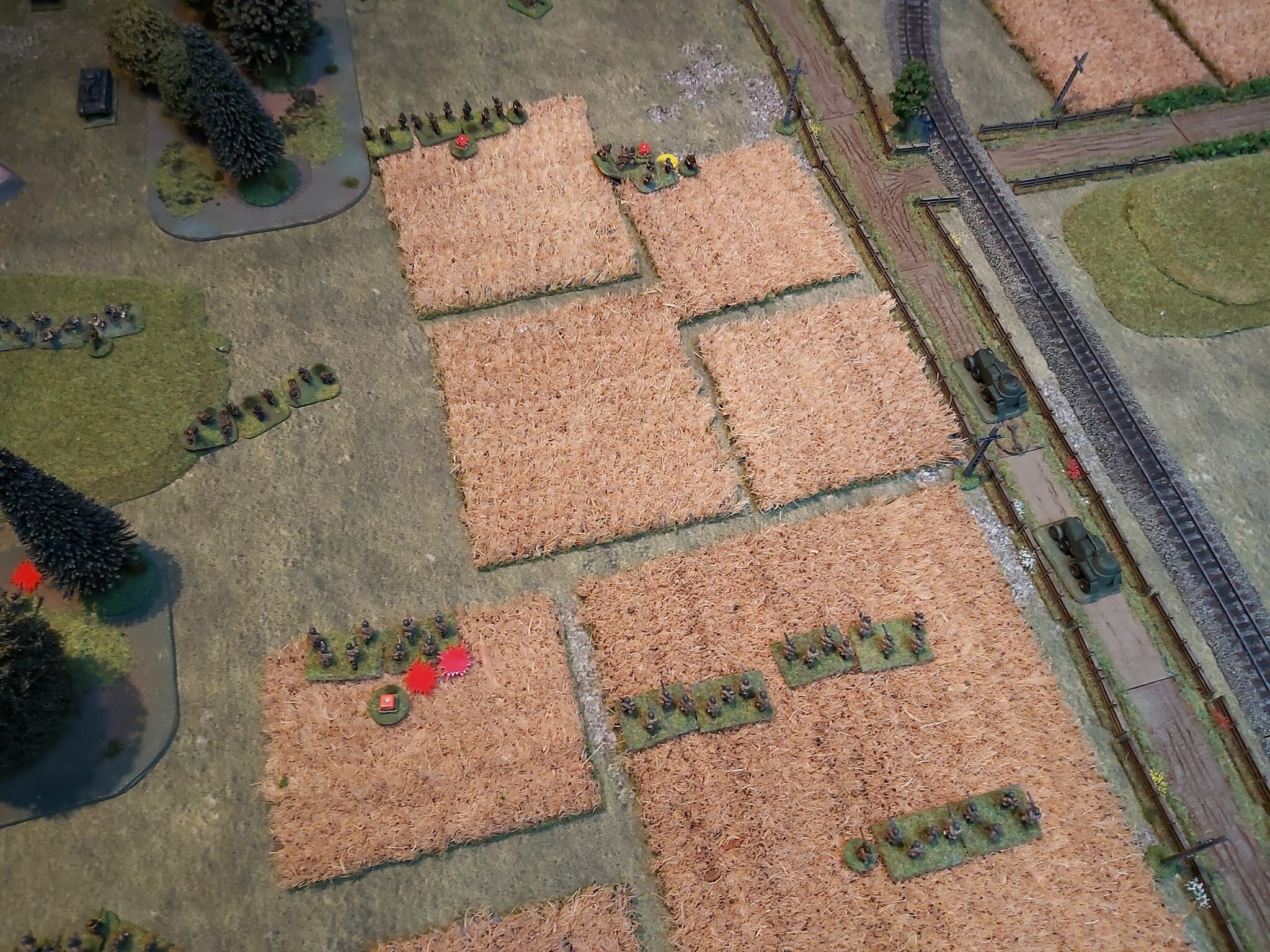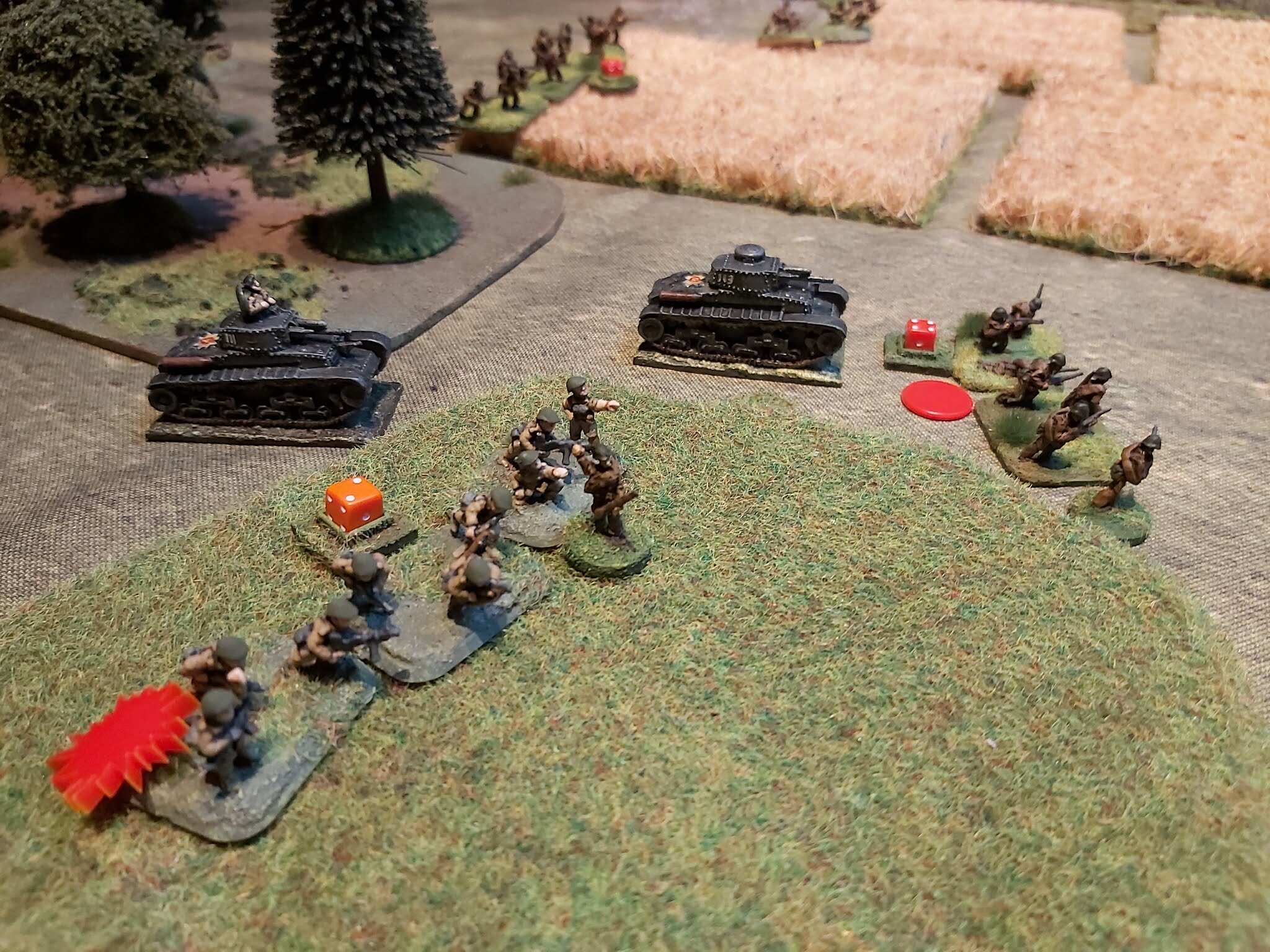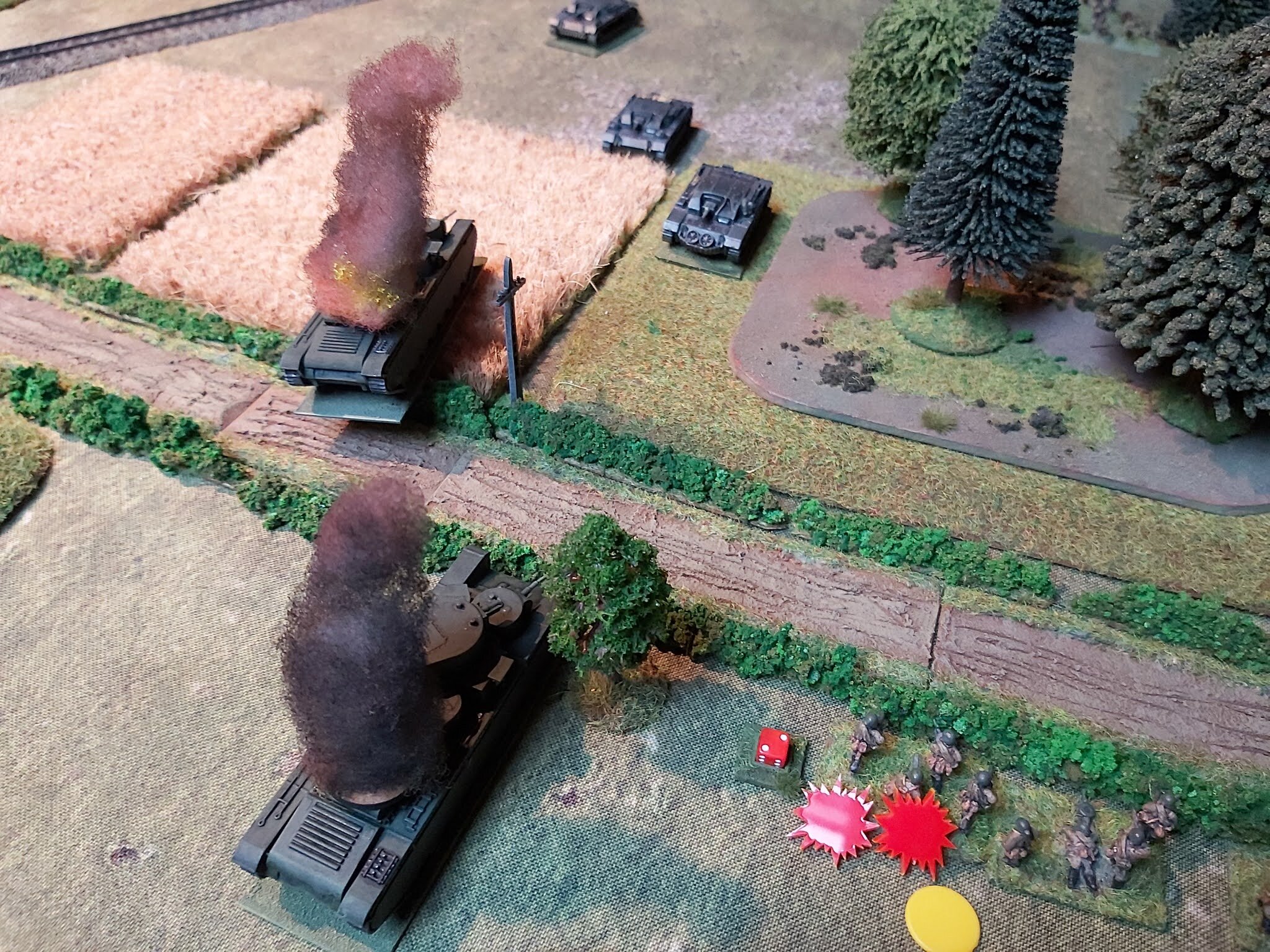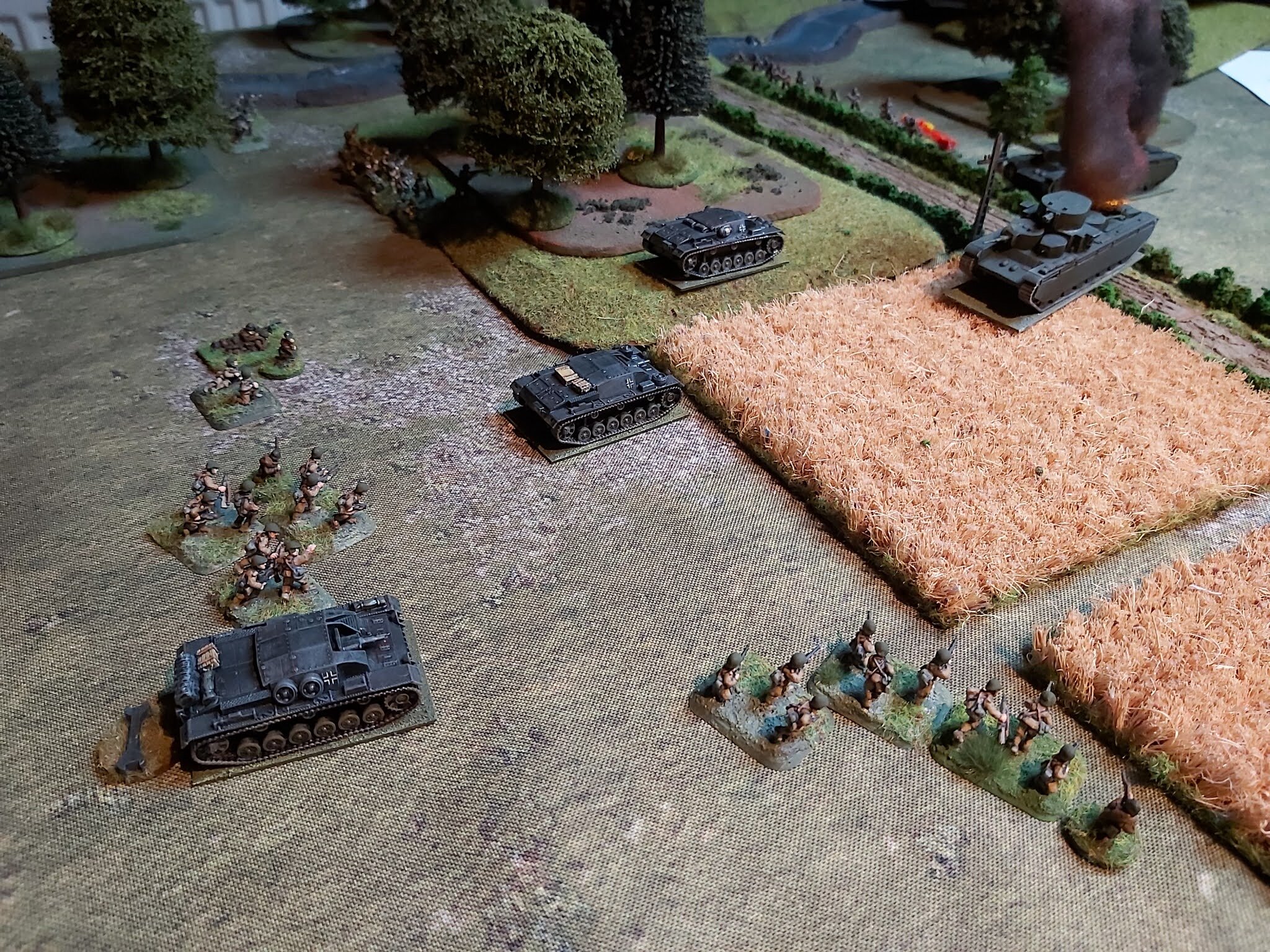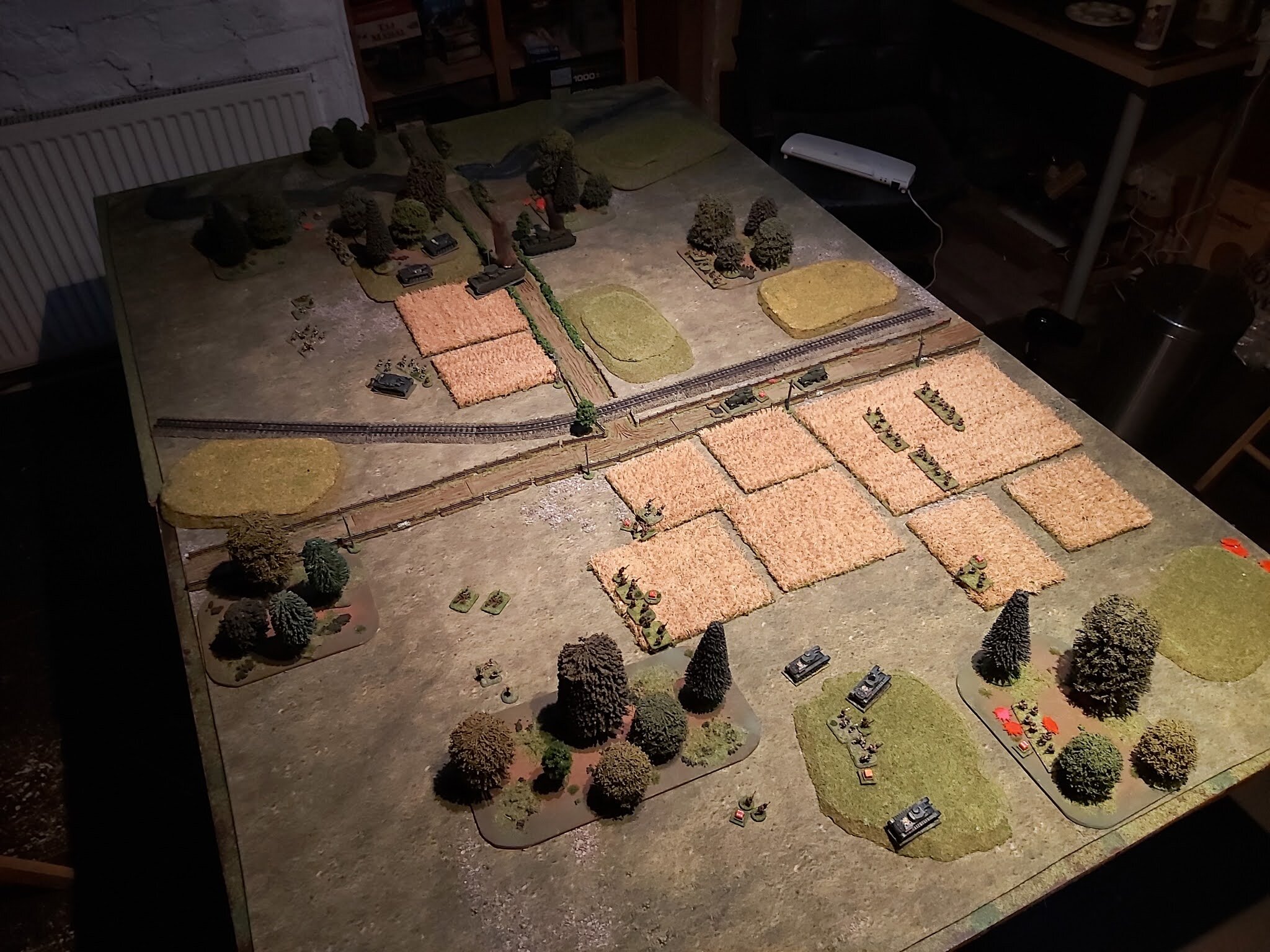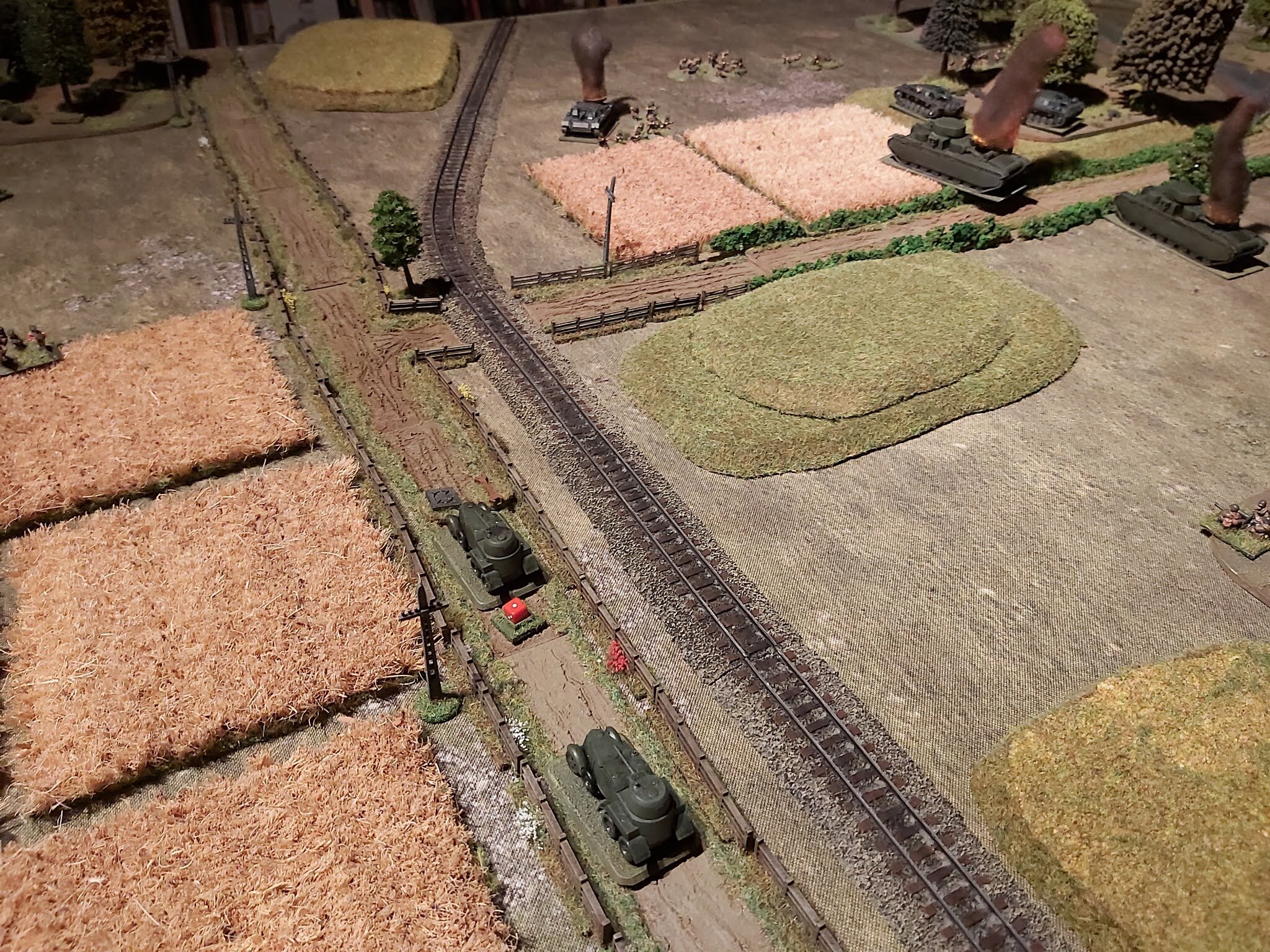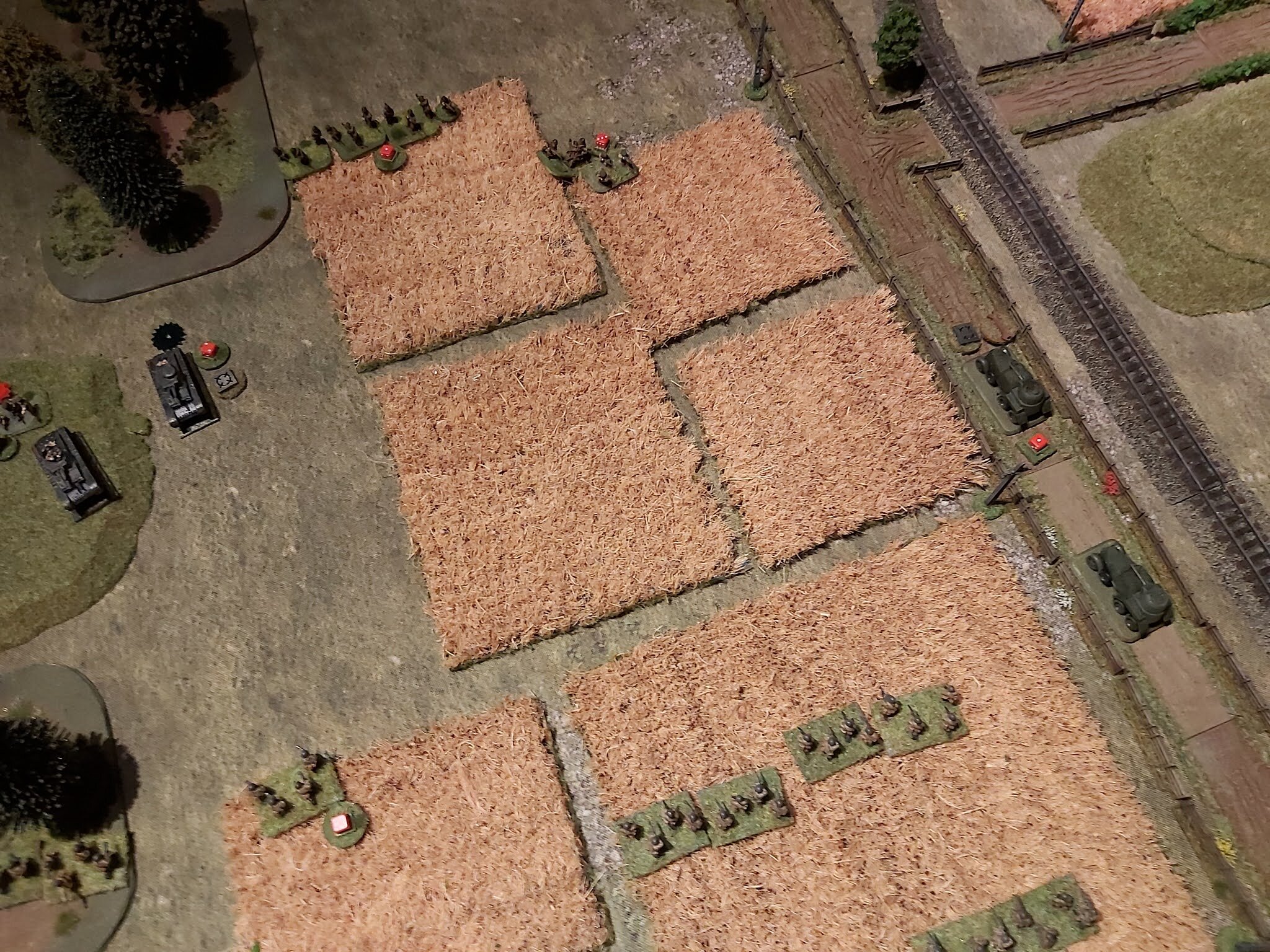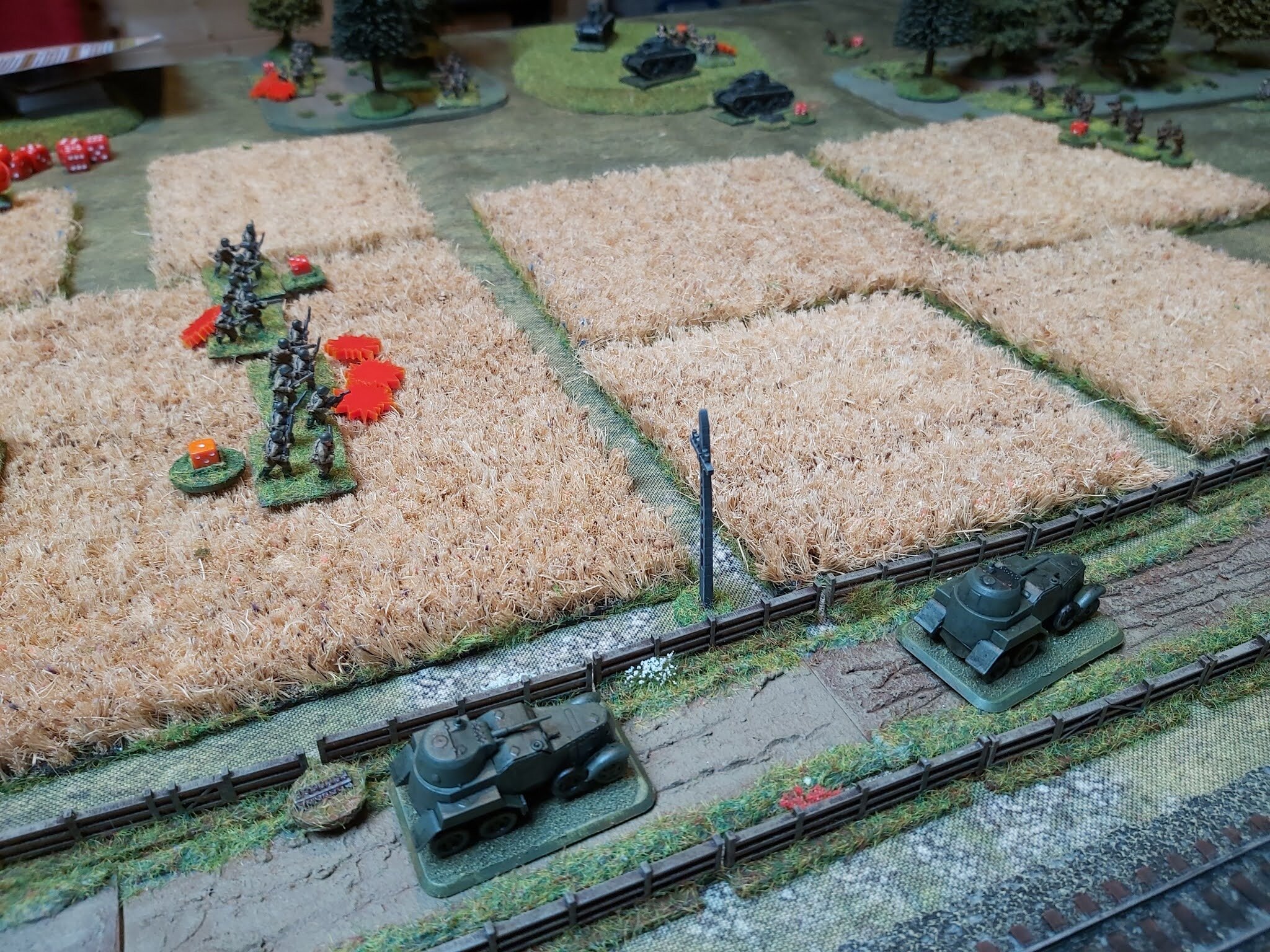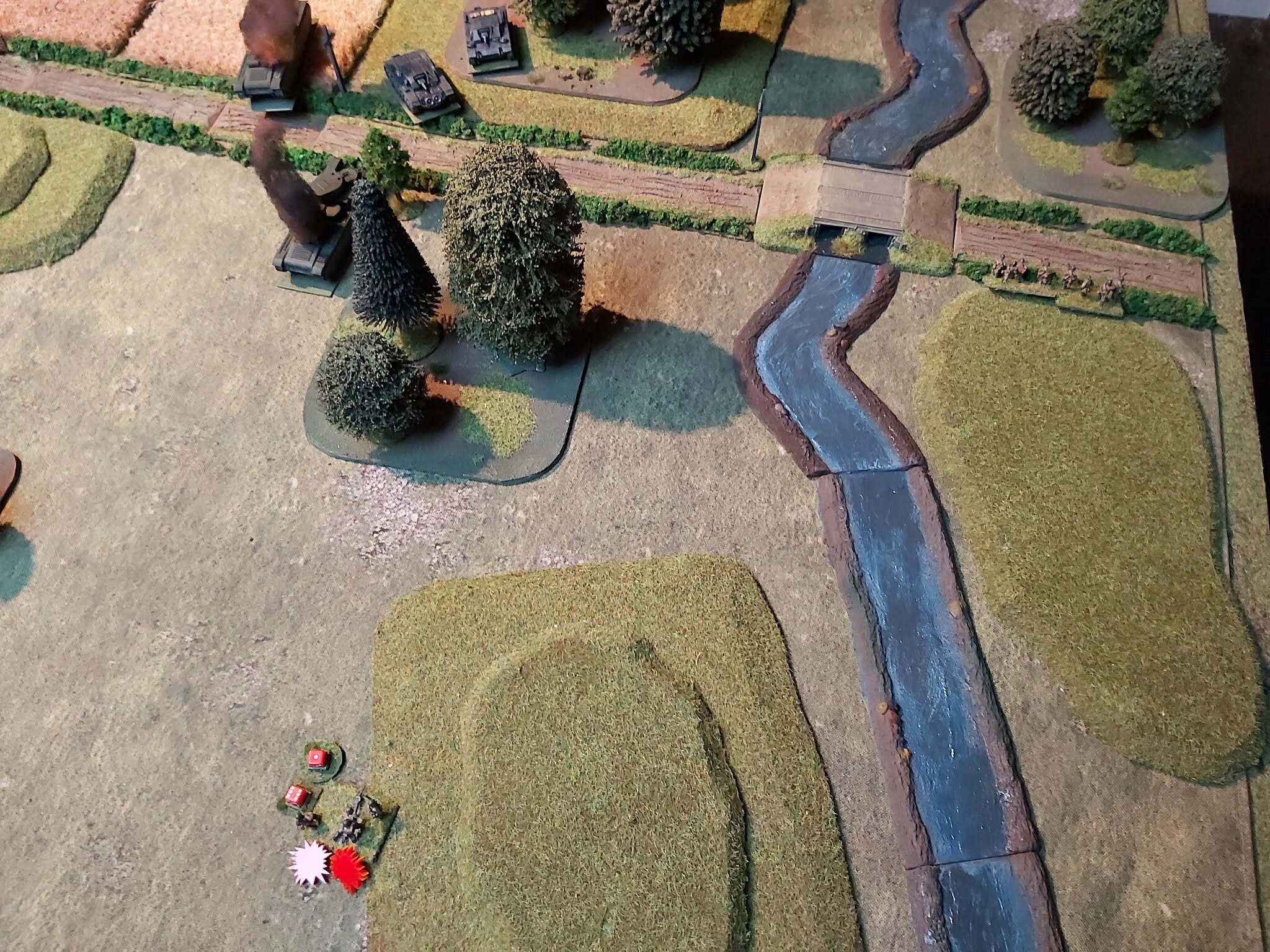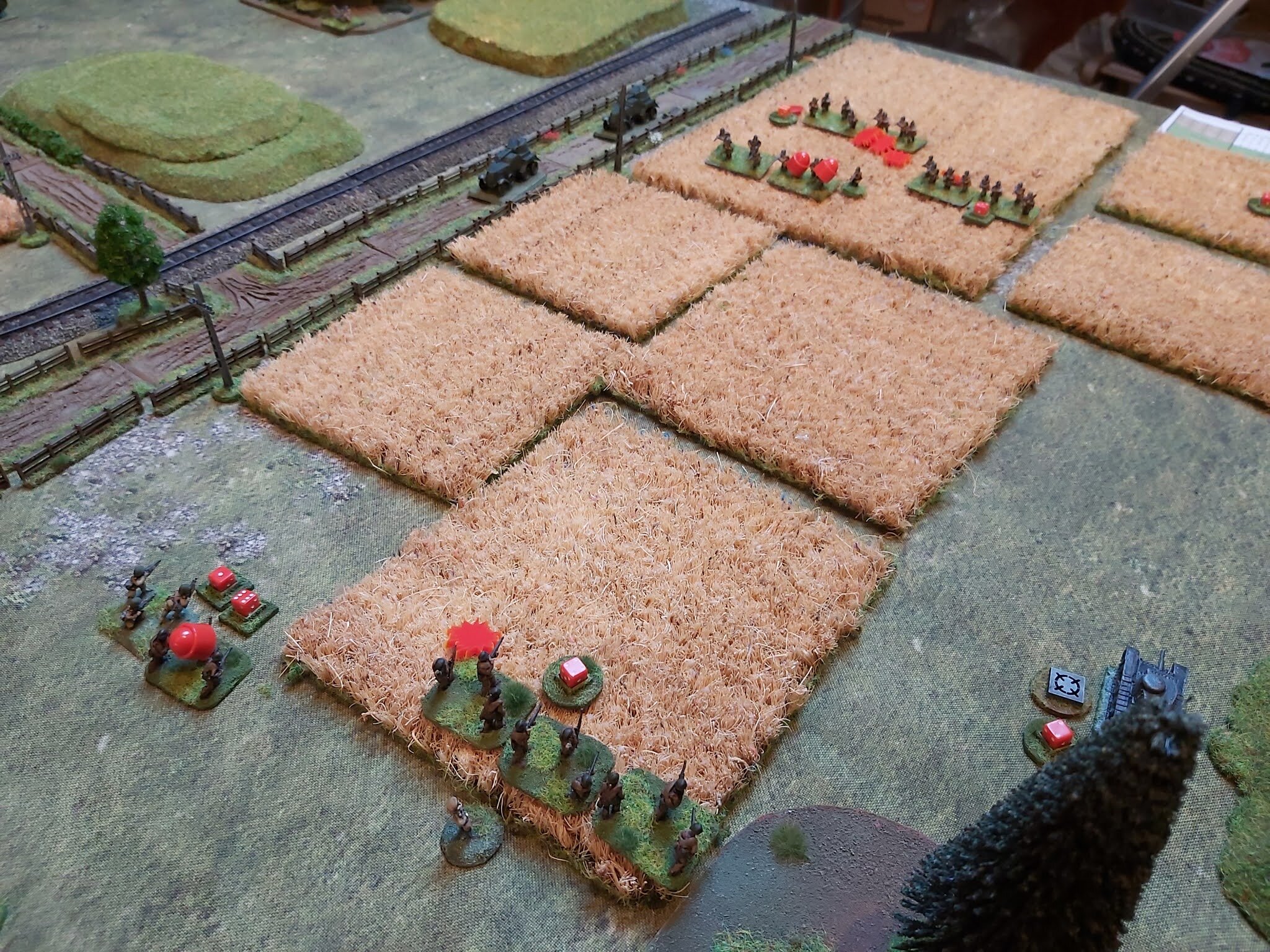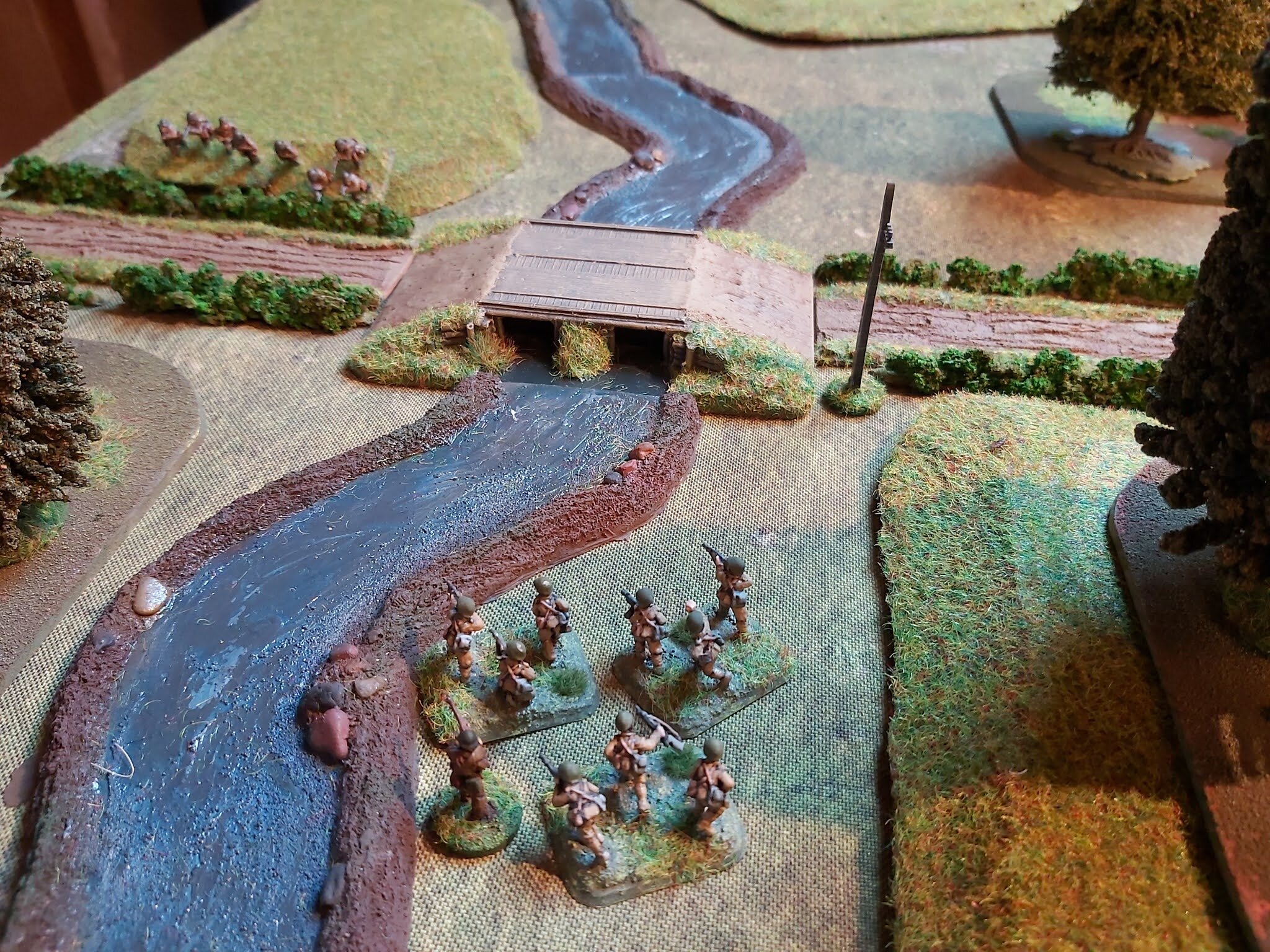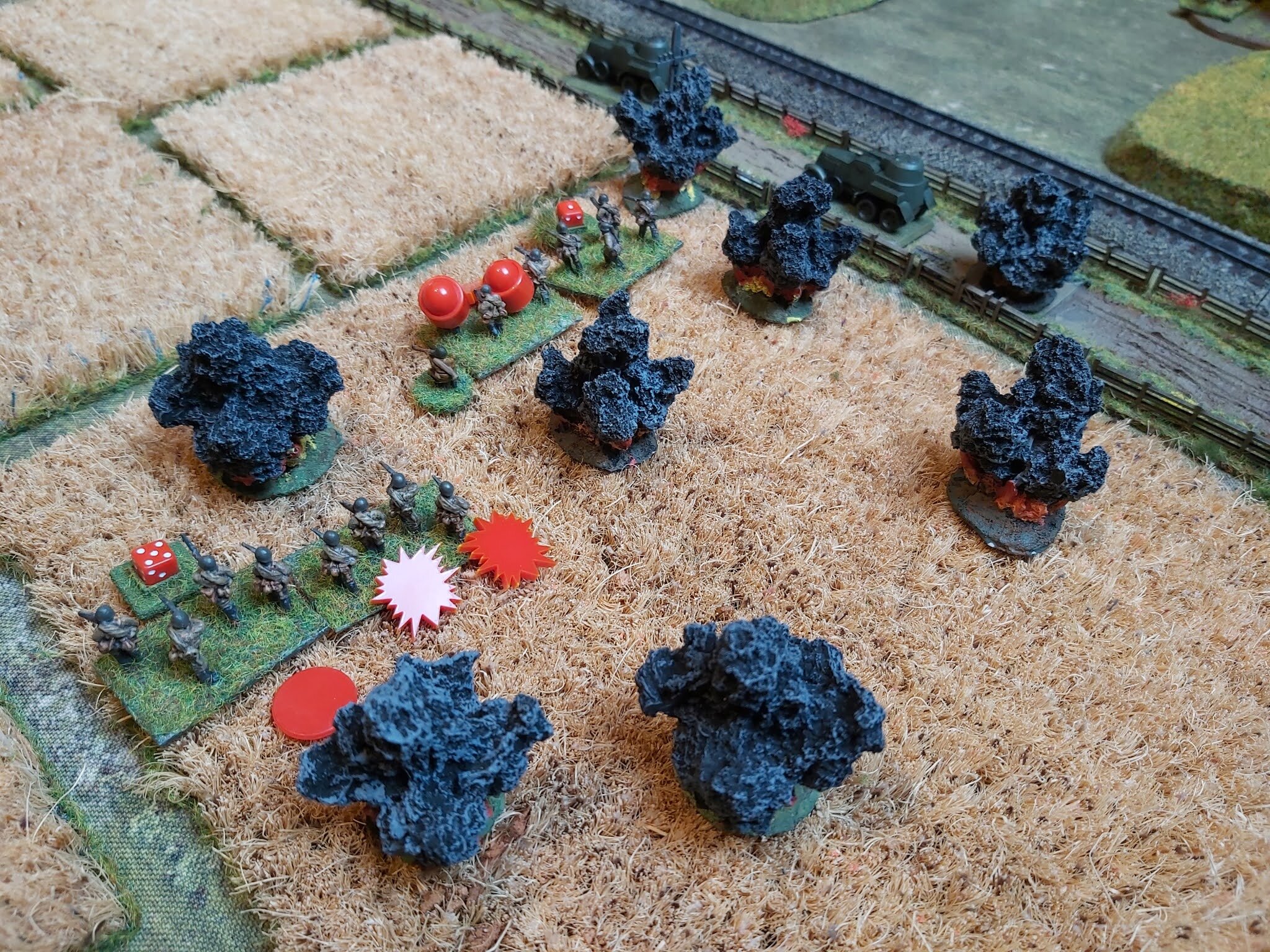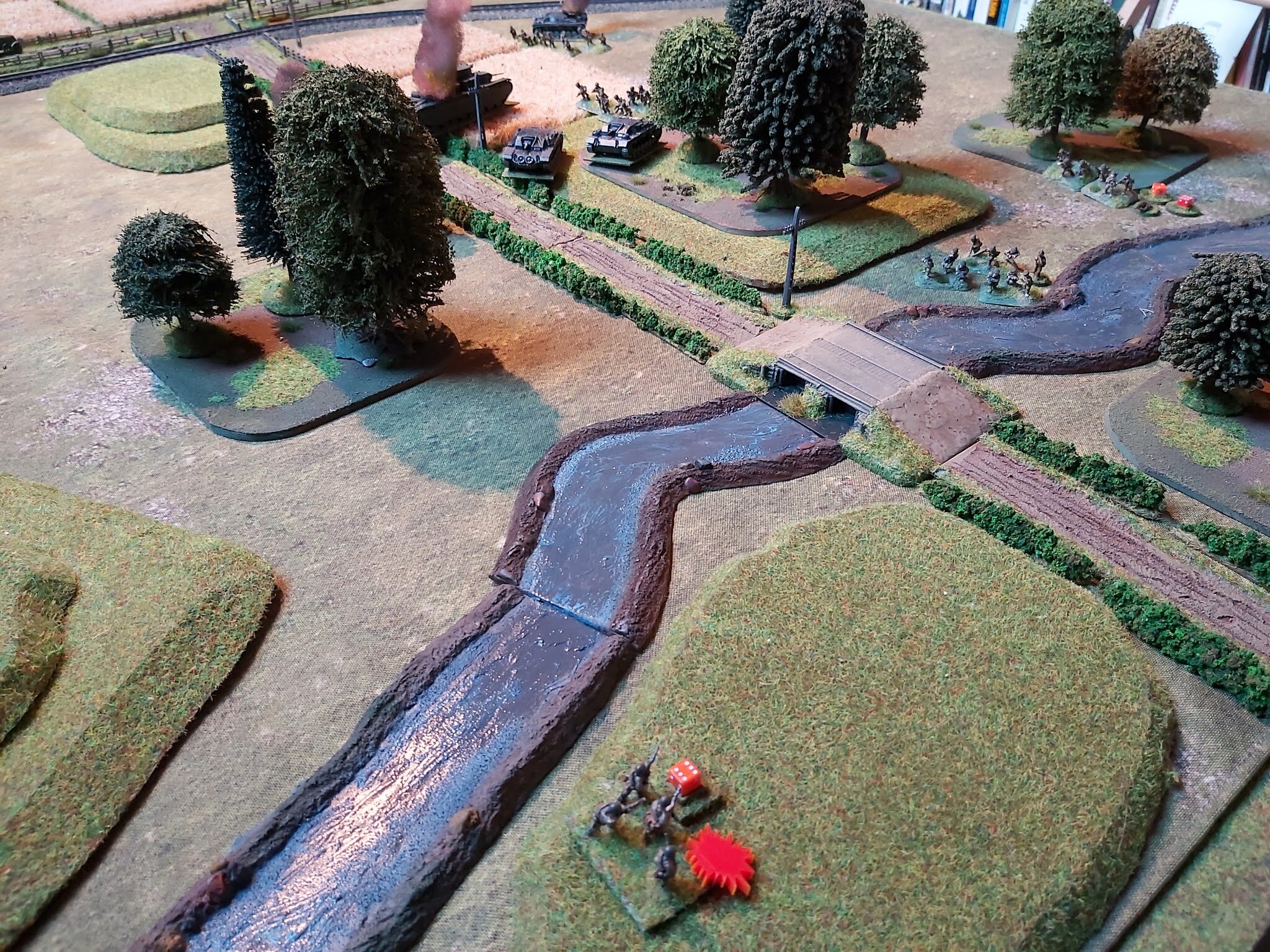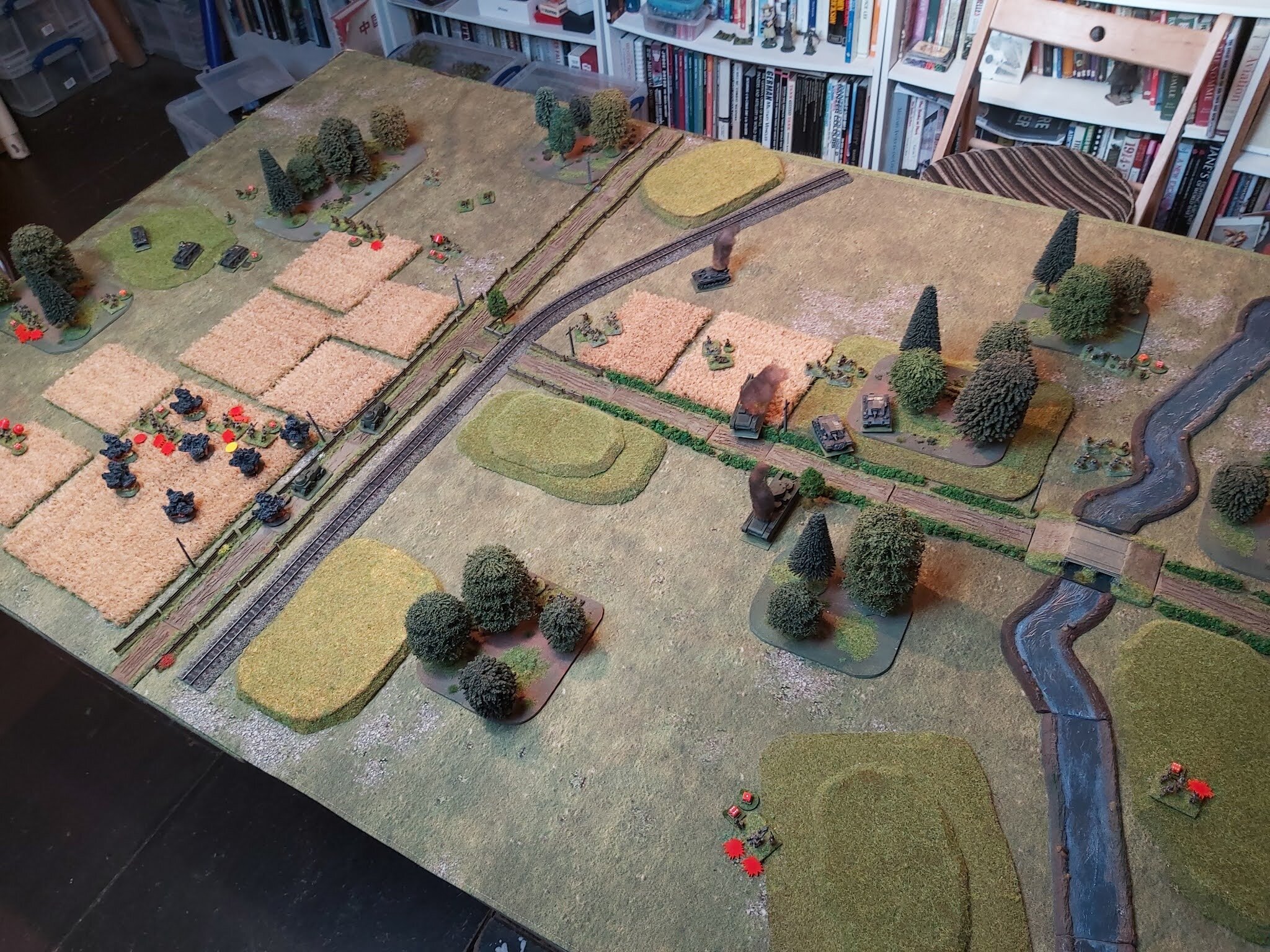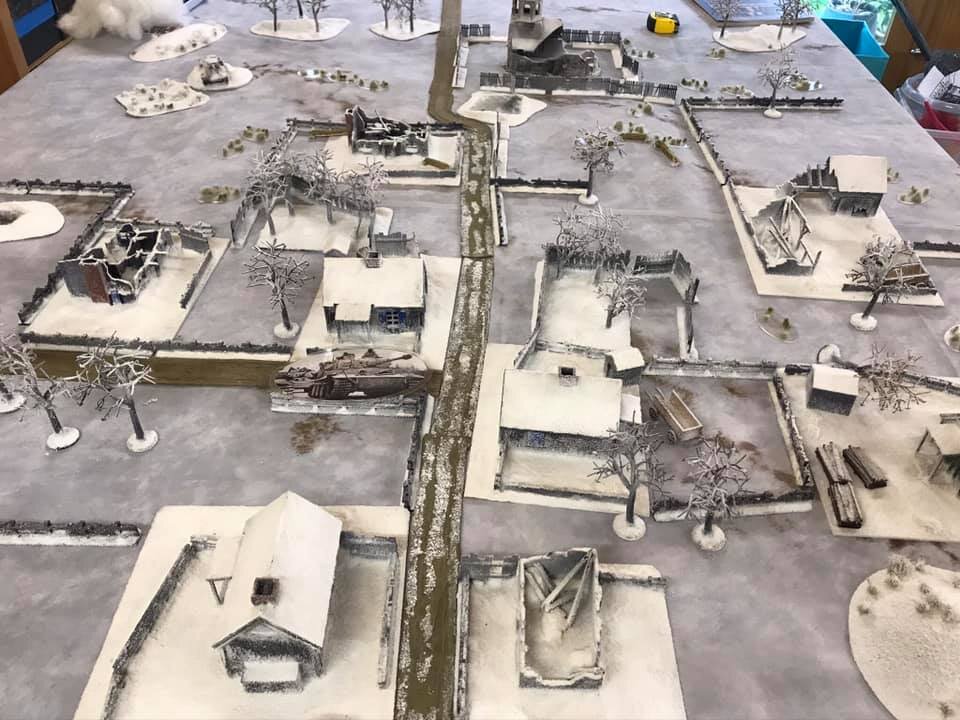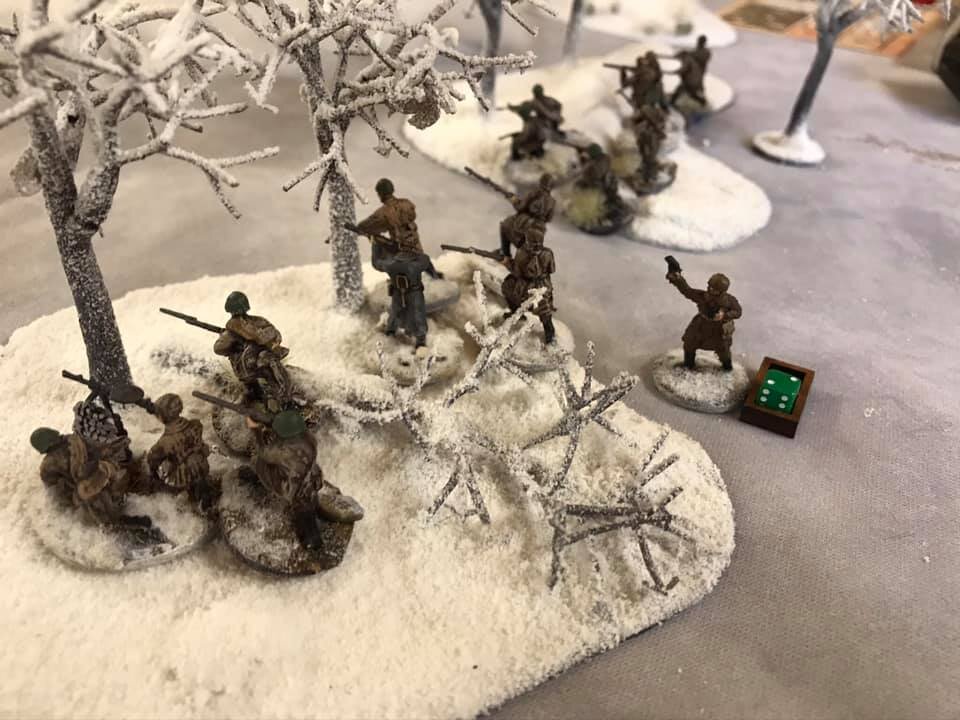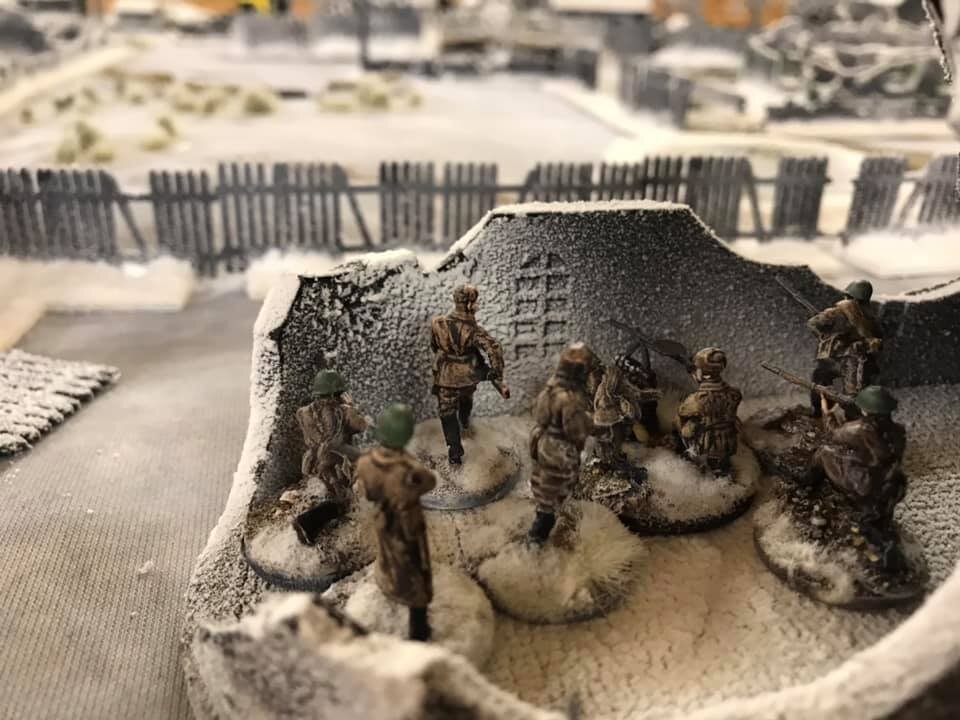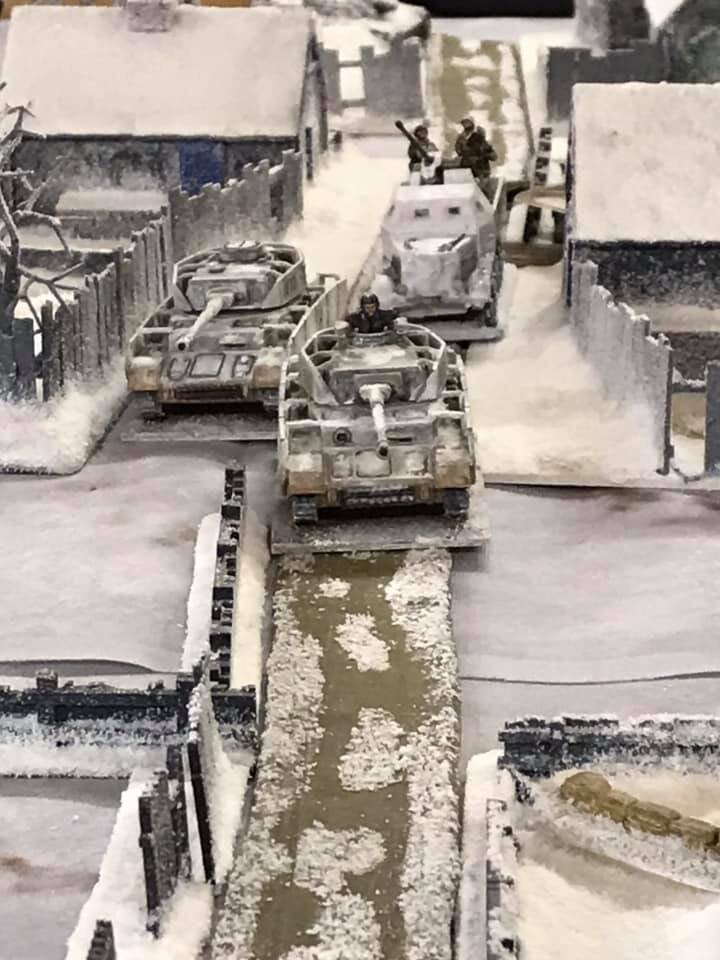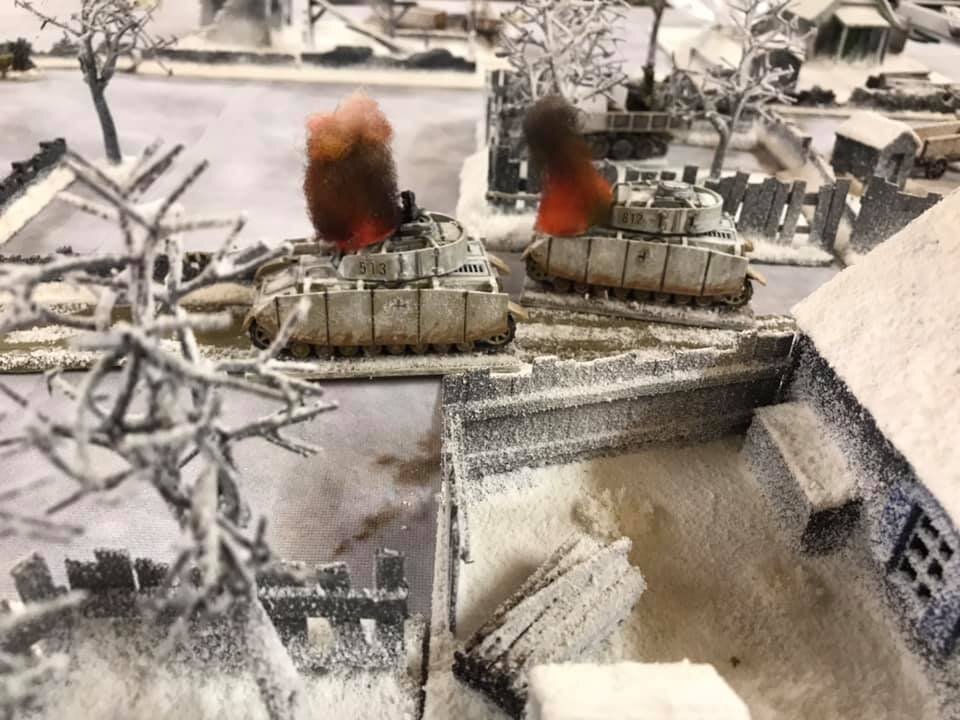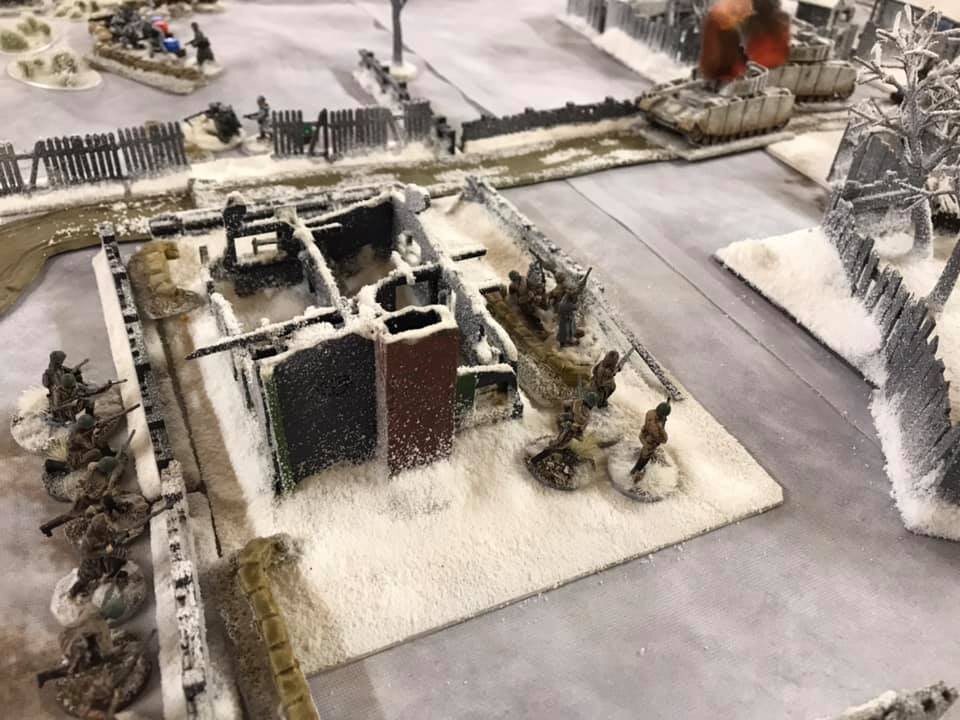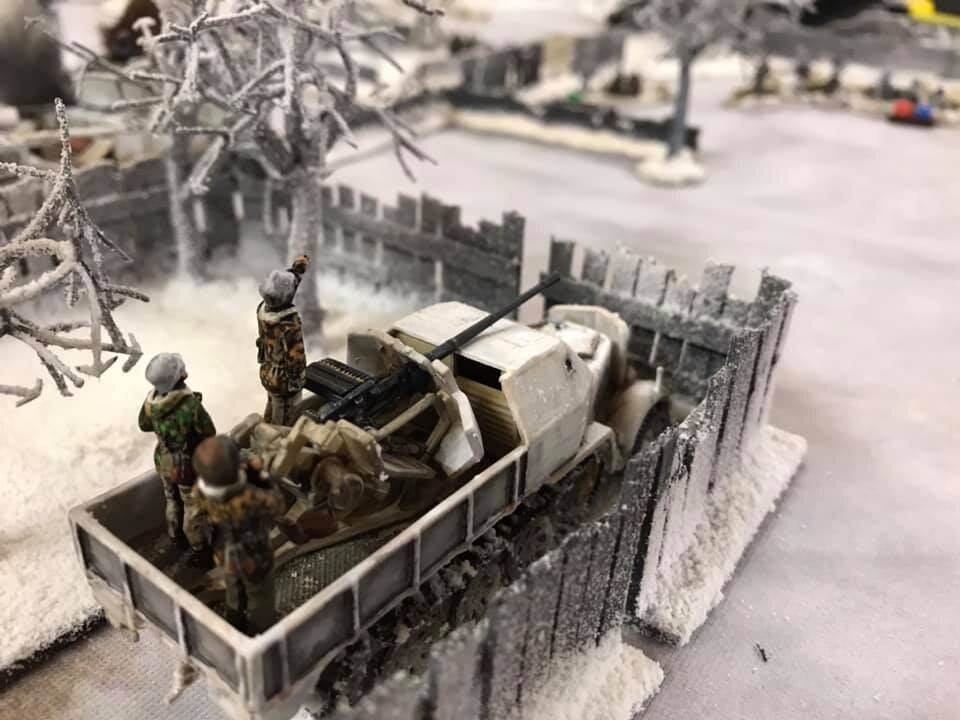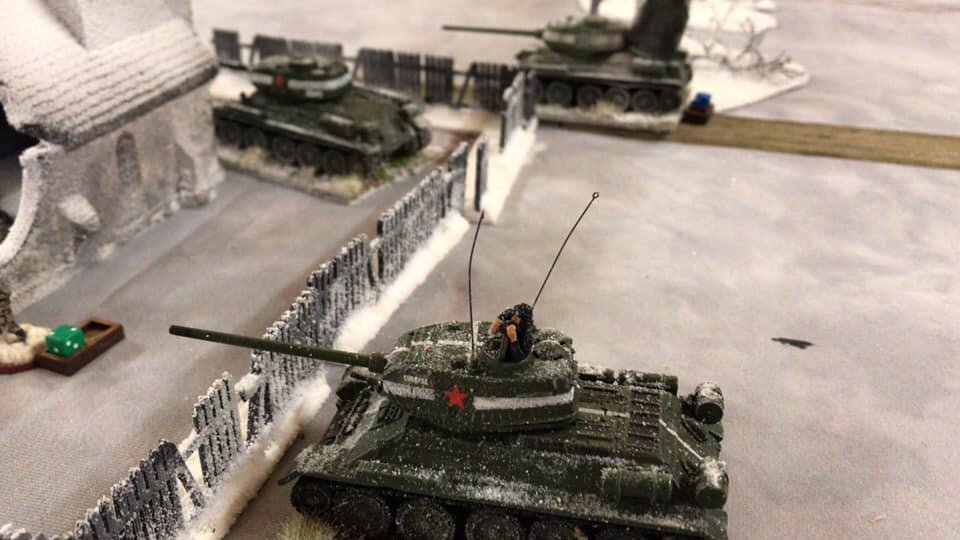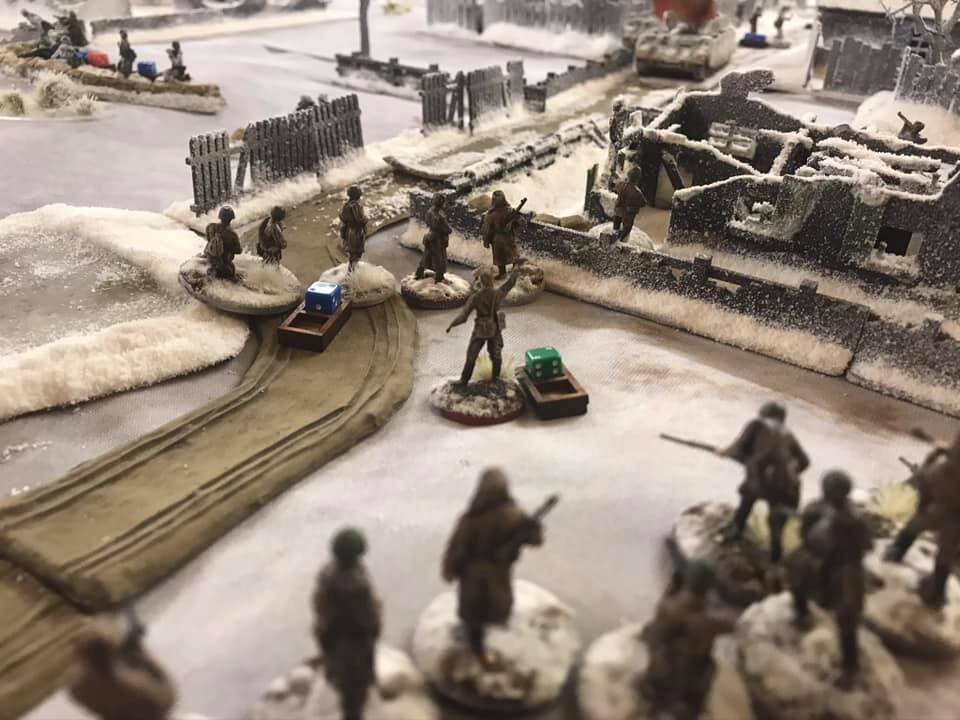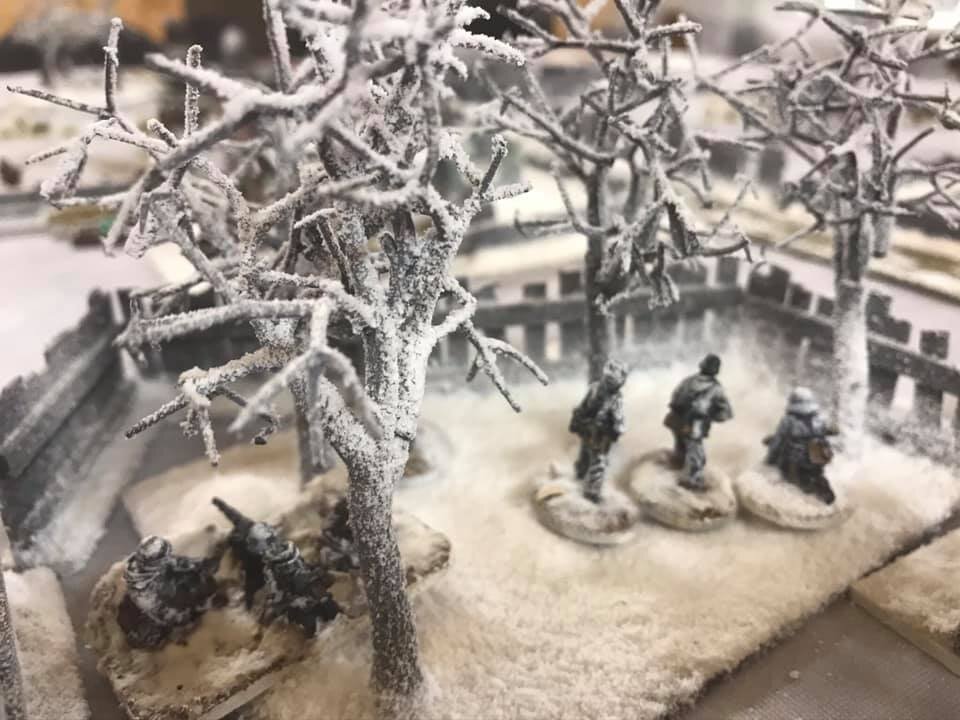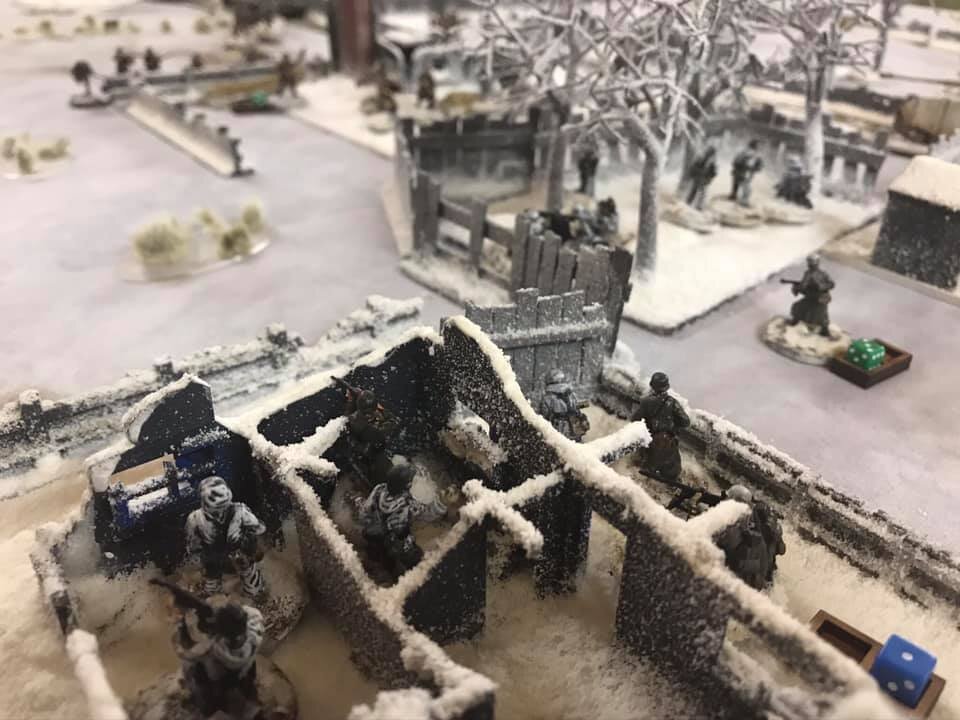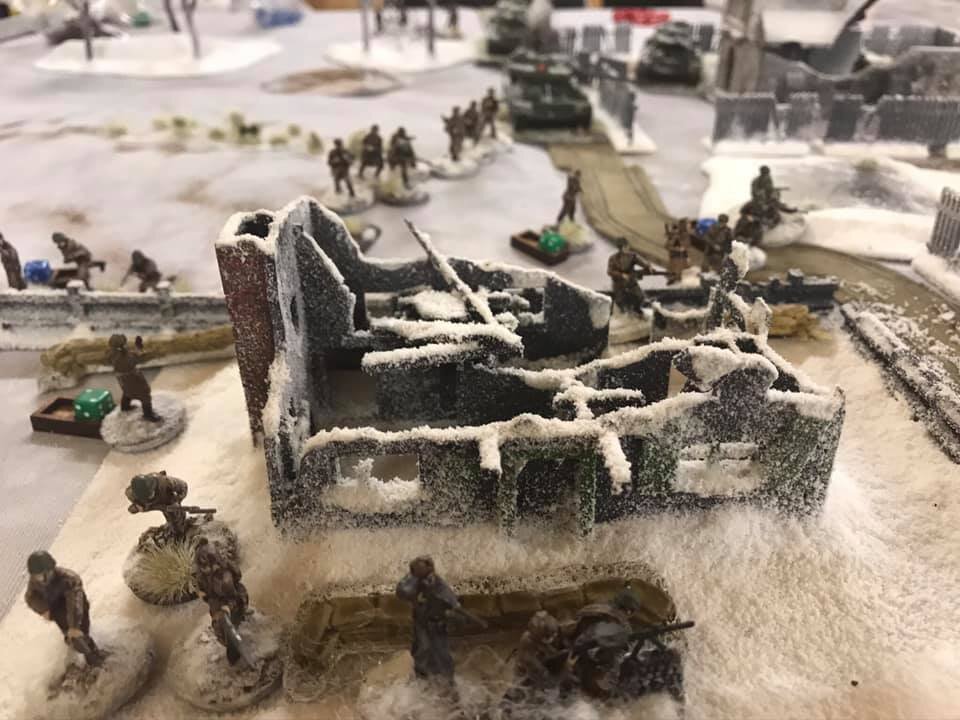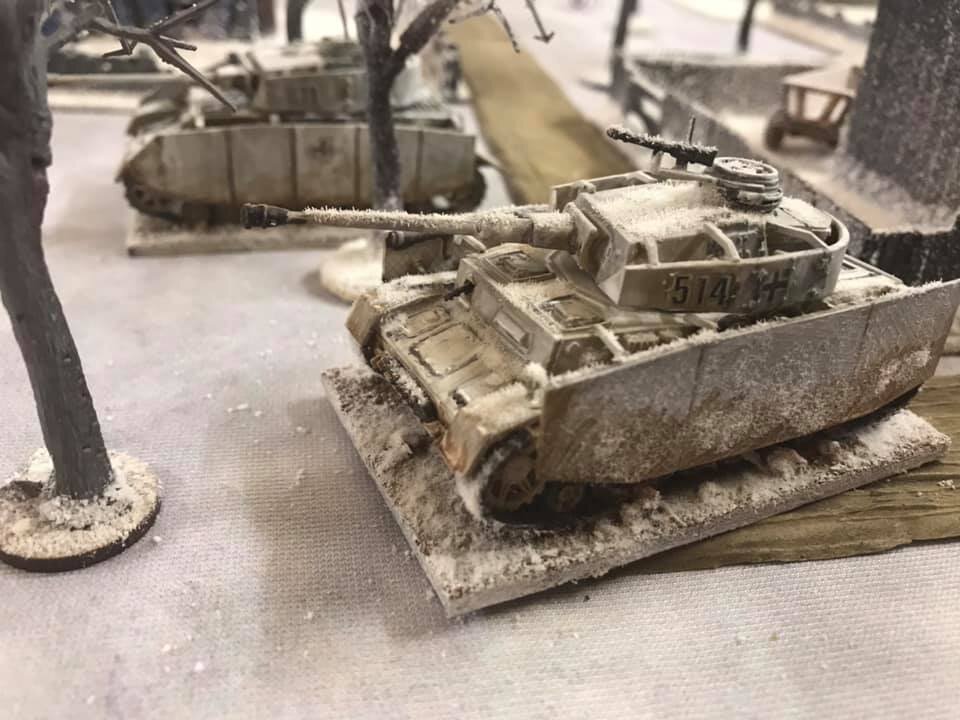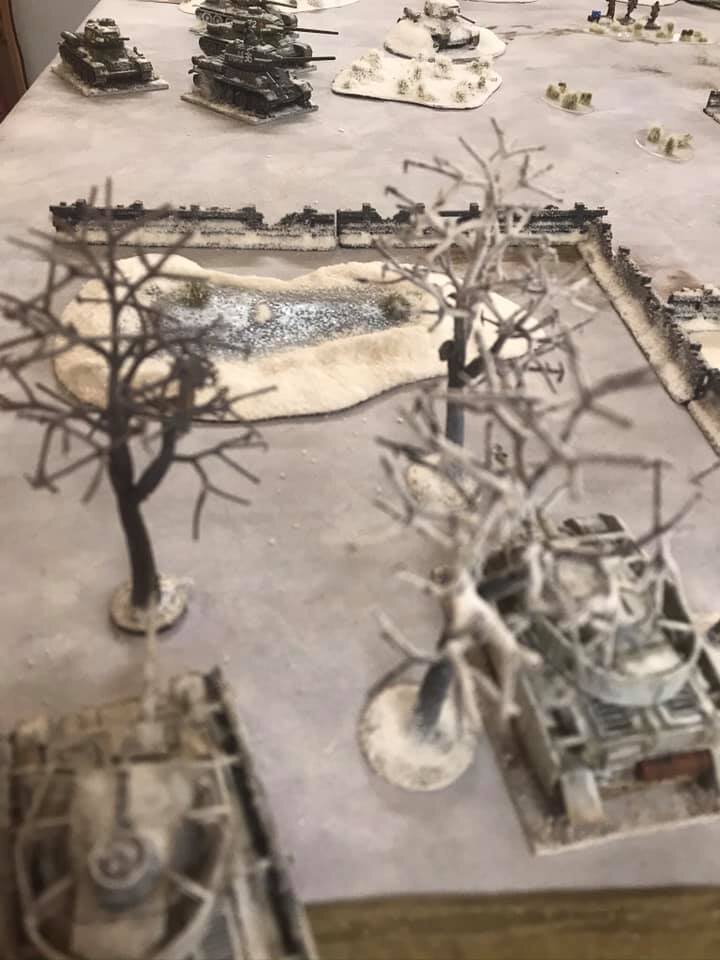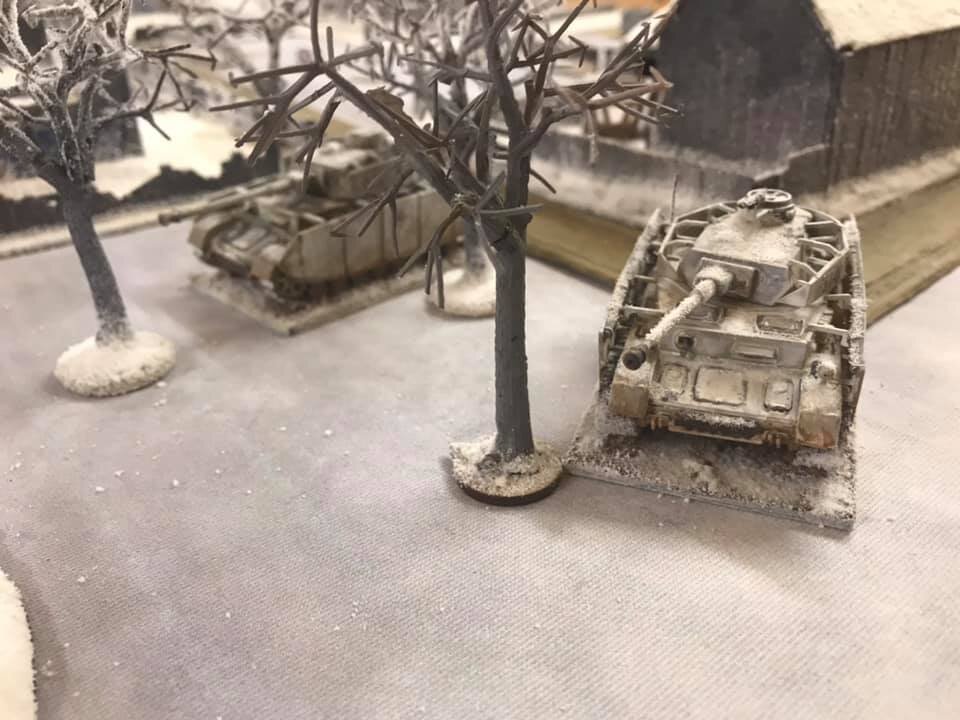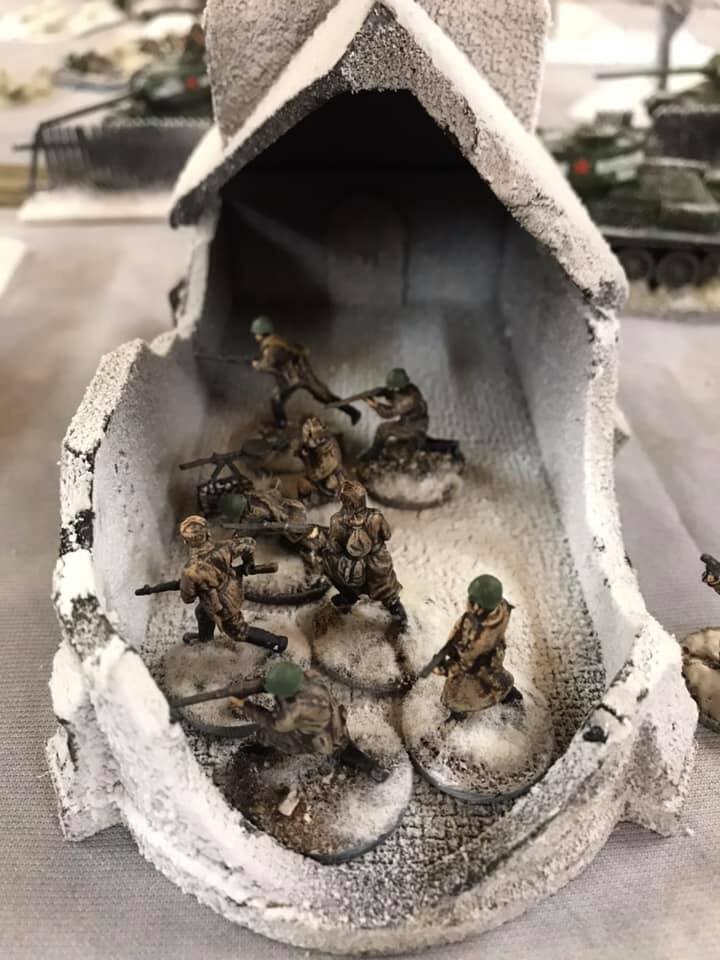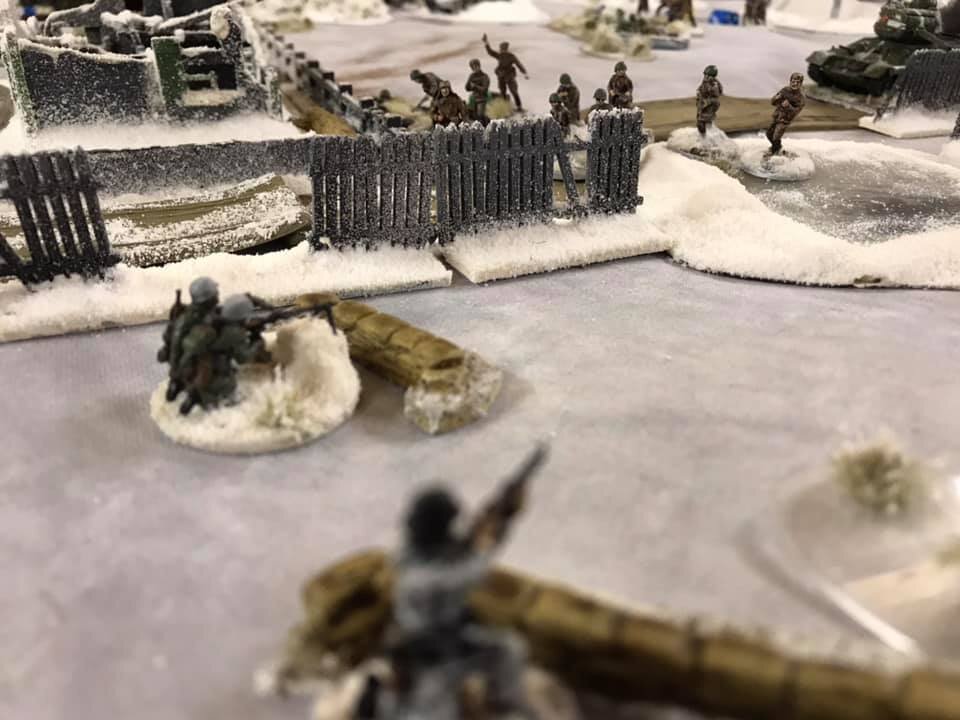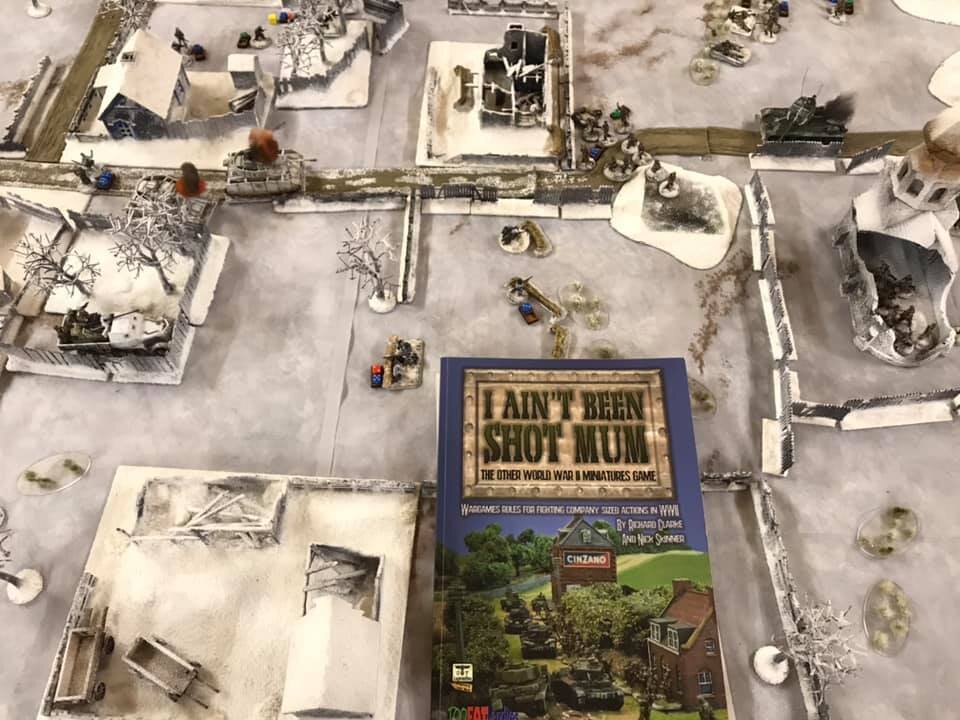Used my Japs for the first time yesterday: a little outing to Malaya and an encounter battle with some Indian Army types.
The Japs had five light tanks (Ha Go's) and two strong platoons of infantry. Unfortunately the company's heavy weapons and medium tanks were still at Payne Ting Station and thus unavailable for this action. Each platoon was three squads strong, but with a fourth "mortar" squad of three light mortars.
The Brits had a far more balanced force: three platoons of infantry, two British, one Indian; four Indian Pattern carriers (Brens only) and a Lanchester armoured car with its twin-Vickers turret and another Vickers in the hull. In addition, the Company HQ boasted a couple of Boys ATR's and two Vickers MMG's.
The battlefield comprised lots of jungle, a couple of "splash across" rivers, one road, and one abandoned building.
The Brits formed a column and headed north up the road. The Japs quickly deployed their tanks, and sent them south down the road, but with a platoon of infantry in the jungle either side with a False Blind even further out. Even under Blinds, however, this proved such slow going that all the action took place in the third of table closest to the Japanese baseline.
The Brits on the road thundered forward pdq, running straight into the Japanese tanks. A fierce fight developed between the three lead Japanese tanks, spraying machine gun fire right, left and centre, and a British platoon on the right of the road, supported by the Company HQ on the left. It soon became apparent that Ha Go's are made out of papier mache, as three of them succumbed to enemy fire: one taking nine hits with a Boys ATR before being abandoned!
Meanwhile, the Japanese had deployed their platoon on their left of the road, ie facing the deployed British platoon, and had formed a firing line with one squad to pin them while two more formed column and moved forward and to the flank.
On the other side of the road, a Japanese Blind had moved up towards the flank of the meddlesome British Company HQ. A Rapid Deployment chip followed by the platoon chip was too good an opportunity to miss: the platoon's three light mortars rained down onto the enemy, and the three squads of riflemen charged forward with the Company and Platoon commander at their head. Banzai!
There was another British Blind there which was revealed as two of the four carriers, their LMG's being put to good use as the Japs charged in. A huge melee developed, and the British were overwhelmed by sheer weight of numbers and bounced back 12" down the road.
Meanwhile the British Lanchester armoured car had shot forward past this melee and had engaged a squad of Japanese infantry and one of the two remaining Ha Go's at point blank range. This Lanchester was obviously one on loan from the Argyll's, because the bloody thing just wouldn't die! The squad attacked it, the tank shot five shells into it: no damage! Meanwhile it's Vickers were proving to be a right pain in the Rising Sun! Finally it was forced to retire and, as it had Japanese troops on all sides, had no choice but to turn tail and sprint down the river. This unfortunately exposed it's rear end, and a final shot from a Ha Go blew it all the way back to the Mull of Kintyre.
During all this excitement, the victorious Japanese had sent one squad down the road after the retreating Brits, and formed the other two into a firing line and were peppering the remains of the British platoon on the other side of the road. Not only this, but the Japanese sniper was having the best day of his career: not a single shot missed during the entire game as he accounted for three Big Men, an MMG team and a couple of infantrymen whose sections needed pinning!
The other two British platoons now revealed themselves and moved forward. The British (as opposed to Indian) platoon was in front and prepared to assault the two Jap sections in front of them. Unfortunately, this mass of men was too good a target, and six light mortars rained down at the juxtaposition of all three sections. A slight touch of gamesmanship, perhaps, but my opponent said that that was exactly what he would do were circumstances reversed, so that was okay then! Two turns later, the sections were carrying 5, 5 and 3 wounds respectively, and all thoughts of charging into combat had disappeared!
Back on the road, the Jap section chasing down it ran straight into the other two carriers and the remains of the Company HQ. It was a real Scooby Doo moment as the squad skidded to a halt and charged back up the road again, with the carriers in hot pursuit, followed now by the Indian platoon who had decided that the British platoon was attracting far too much fire to be worth standing next to.
The Japs headed into the jungle, but had been badly hurt by the carriers. Mass fire from four Brens is quite unpleasant! The Indian plan was to keep shooting the Japs then go in with the infantry. Unfortunately the Jap light mortars ruined everything: dropping shell after shell onto the Indian sections forming up to charge. The two remaining Ha Go's were also moving forward, preparing to engage the carriers.
At this point the Jap sniper polished off the last British Big Man, and the Brits decided to retreat. Although beaten, they had given the Japs a real bloody nose: definitely in no position to follow up the retreating enemy, Ha Go's or no Ha Go's.
This proved to be a cracking battle: much closer than the report above perhaps suggests. If the last two Japanese tanks hadn't been imminent, the Indian Carriers would quite possibly have done enough damage for the Indians to wipe out the Jap platoon in the tree line. This would have left around two British platoons (in strength) against one Japanese one, and victory might have gone the other way. As it was, the Lanchester's charge forward had proved suicidal, and Neil was left cursing the fact he didn't have it handy for the endgame.
What was very interesting was how closely this battle mirrored actions from the Malaya campaign: the thrust of the "unstoppable" Japanese tanks being answered by the Brits hurling everything they had at them; a Lanchester doing real damage everywhere it was; Japanese mortars landing everywhere and, of course, the Japs pinning the front and attacking the flanks. The only dodgy note was the success of the Japanese sniper!
I highly recommend giving this theatre a go. The British/Indians and Japanese have such different forces that it's quite unlike a game where each side has a couple of platoons and a handful of tanks/guns. The close terrain, but lack of buildings, gives a very weird wave structure to the game: all slow, slow manoeuvres punctuated by lots of horribly close range firefights and melees. False Blinds proved much more important than in any other game I've played, as spotting was so difficult, and the road was at the same time the only place where you could move at normal speed but the most dangerous place on the table.
Robert Avery















